On my recent trip to Iceland there were two birds I particularly wanted to avoid. One was the Puffin!
Why ? Because I knew I was soon to return to the Isle of May where I would be surrounded by them.
At first I resisted the temptation to photograph them, I have been there and done that too many times so I didn't really need any Puffin pictures to add to my collection but eventually my will to resist was broken, particularly if the light and background was particularly suitable.
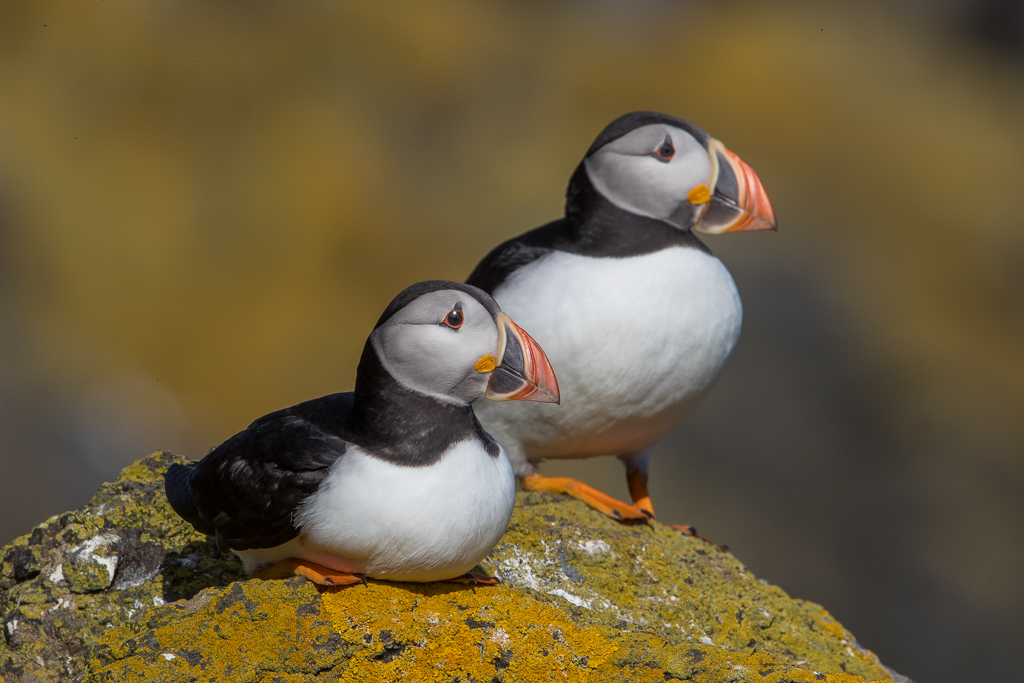
If you only have a few hours to spare you might have to just accept what is available.
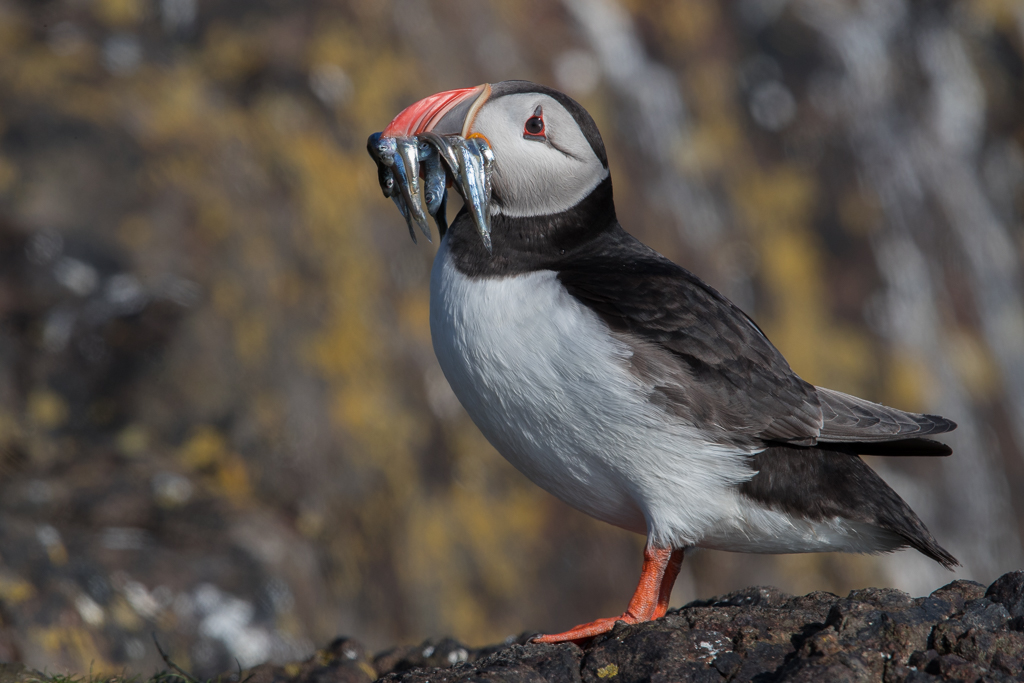 The cold hard rock in the background isn't nearly as nice as the soft yellow bokeh of litchen covered ones especially when shot at a small aperture.
But with the lens wide open it's altogether different.
This at f5.6
The cold hard rock in the background isn't nearly as nice as the soft yellow bokeh of litchen covered ones especially when shot at a small aperture.
But with the lens wide open it's altogether different.
This at f5.6
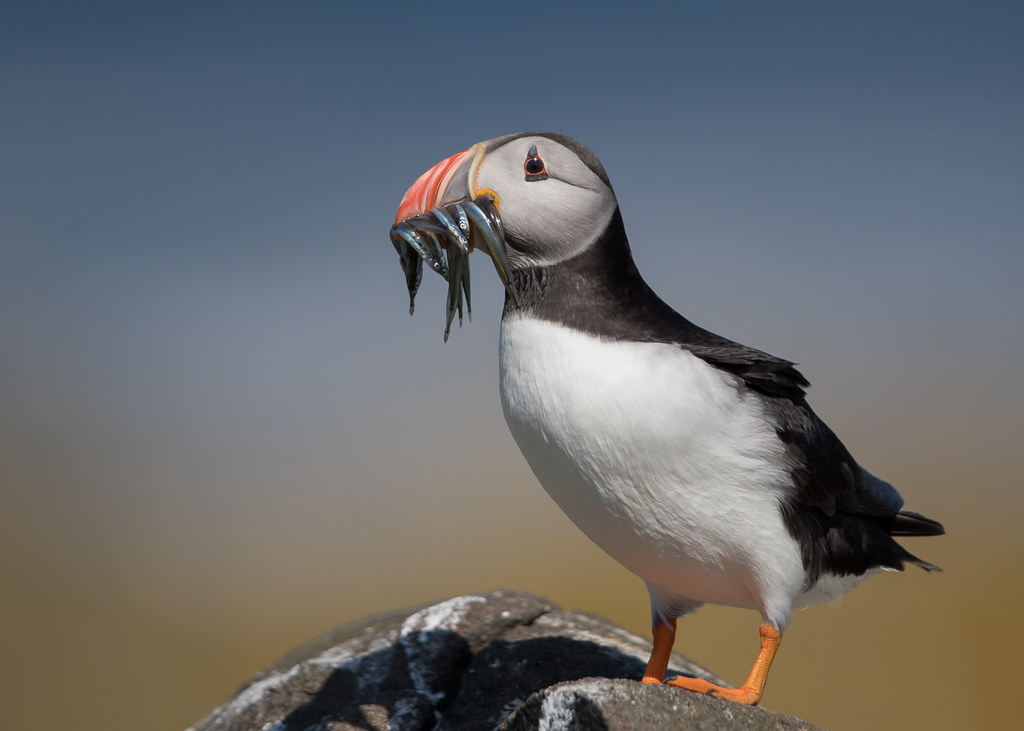 or this at f4.
or this at f4.
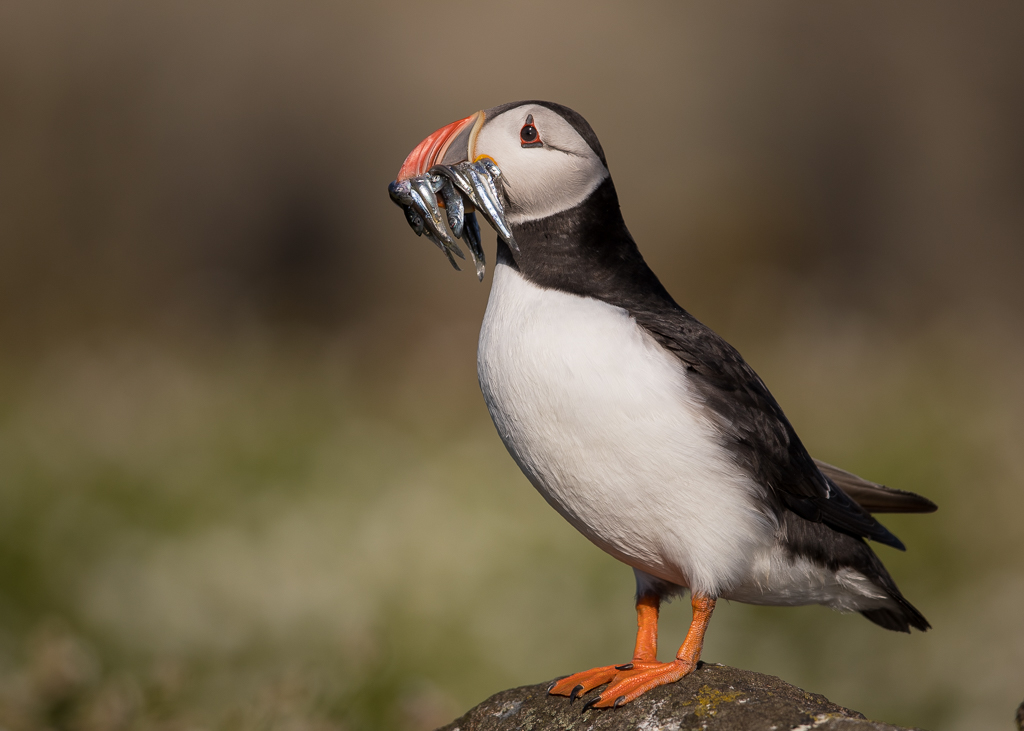 Why would you use anything different then? Wide open is fine if your subject is side on but if it isn't you need to be careful, especially with longer telephoto lenses, to maintain sufficient "depth of field" to get both the nearest and furthest part of your subject in focus. The nearer you are the less the DOF.
To get the classic Puffin headshot with a bill full of Sand Eels I narrow the aperture right down.
Why would you use anything different then? Wide open is fine if your subject is side on but if it isn't you need to be careful, especially with longer telephoto lenses, to maintain sufficient "depth of field" to get both the nearest and furthest part of your subject in focus. The nearer you are the less the DOF.
To get the classic Puffin headshot with a bill full of Sand Eels I narrow the aperture right down.
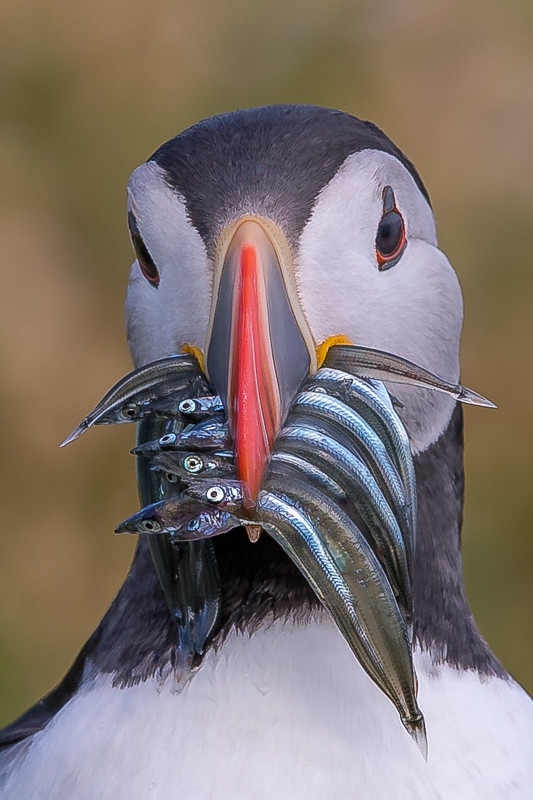 The trouble is once you have taken one shot you are hooked again.
The trouble is once you have taken one shot you are hooked again.
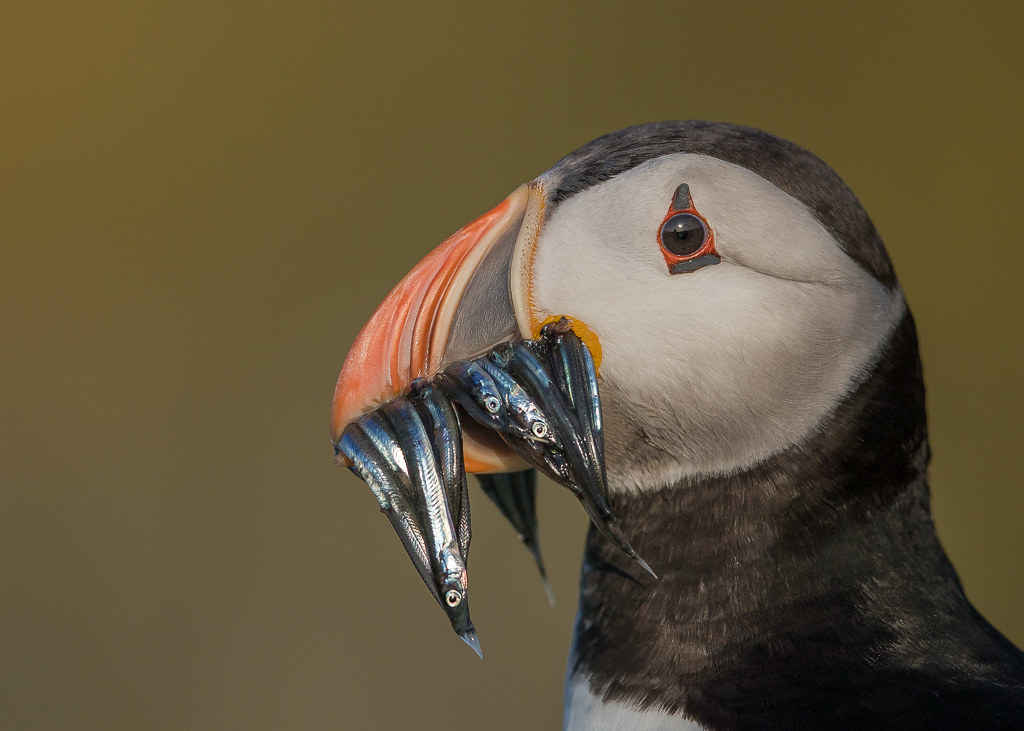 I'm a self confessed addict.
I'm a self confessed addict.
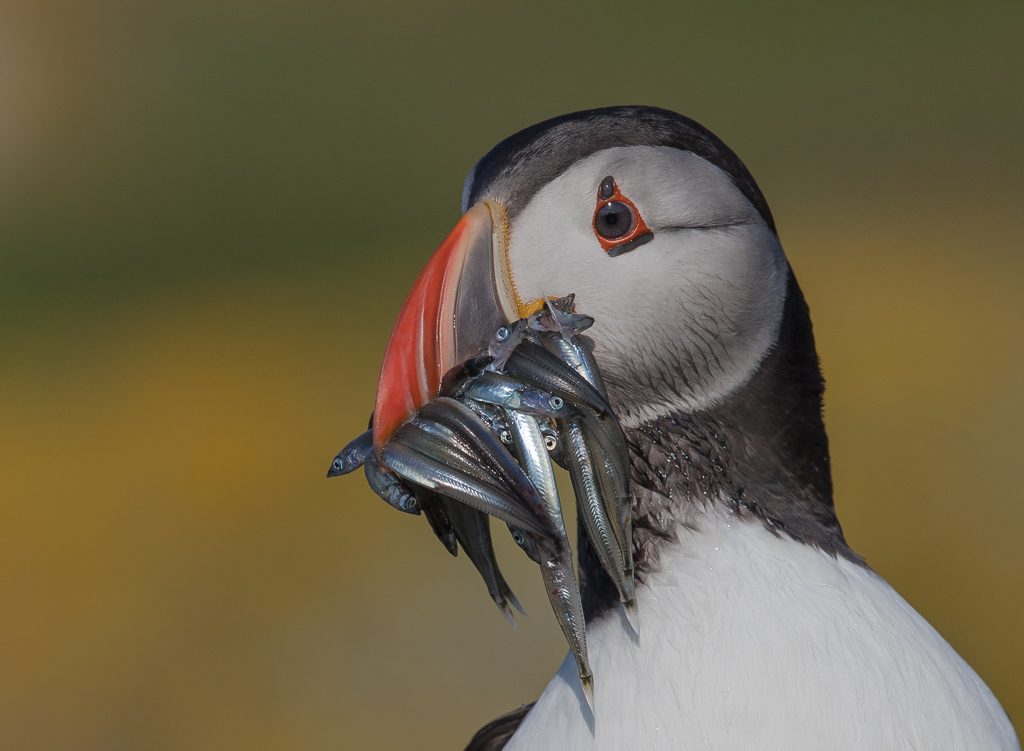 Strangely on this visit I hardly bothered with Puffin flight photographs
Strangely on this visit I hardly bothered with Puffin flight photographs
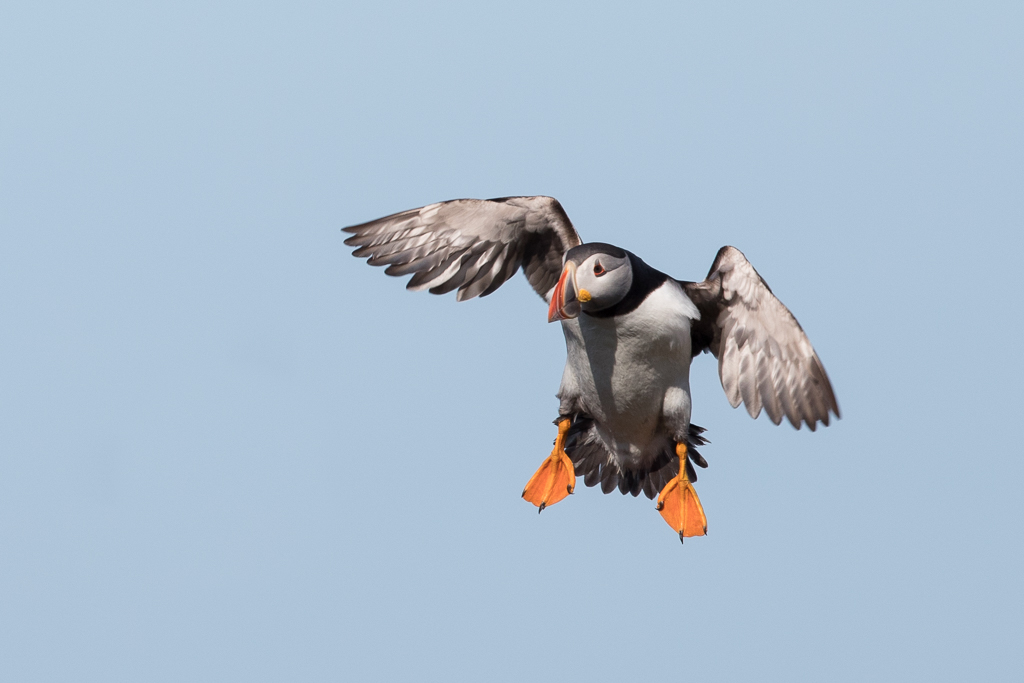 I kept that for other species but the wing spread and shake down makes a very appealing shot.
I kept that for other species but the wing spread and shake down makes a very appealing shot.
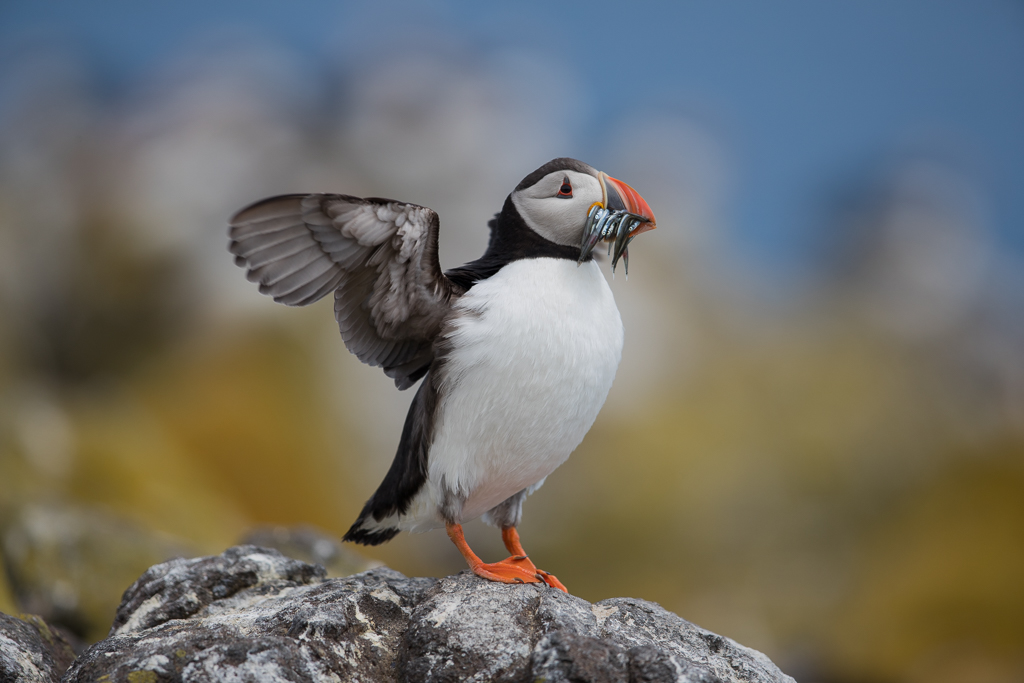 In actual fact they sometimes look better without a bill full of fish for those shots too.
In actual fact they sometimes look better without a bill full of fish for those shots too.
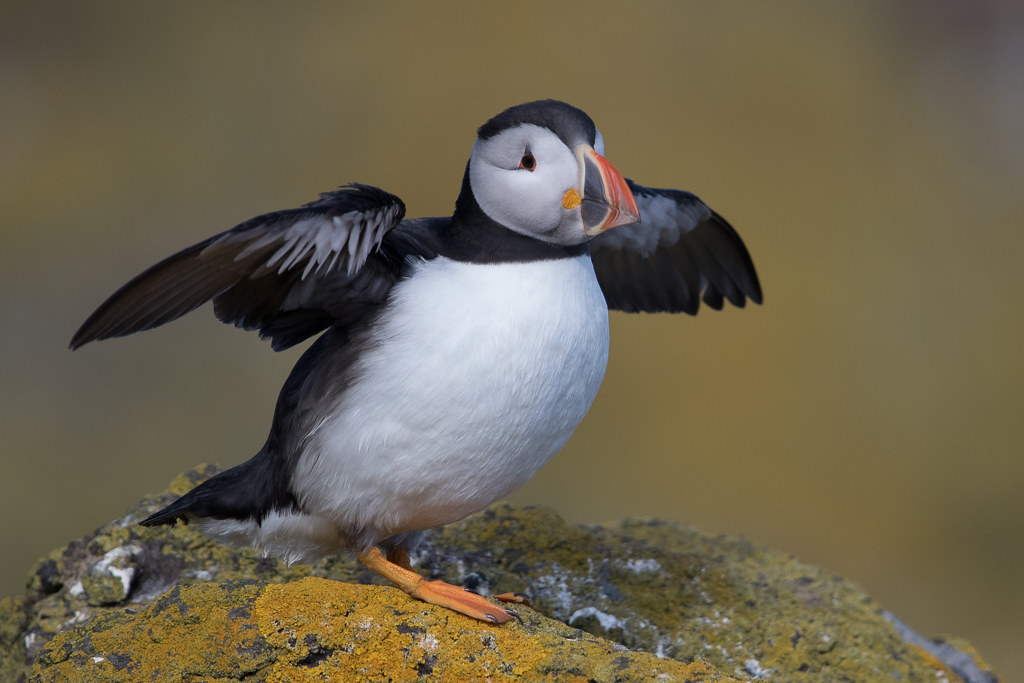 The facial expression seems to change totally
The facial expression seems to change totally
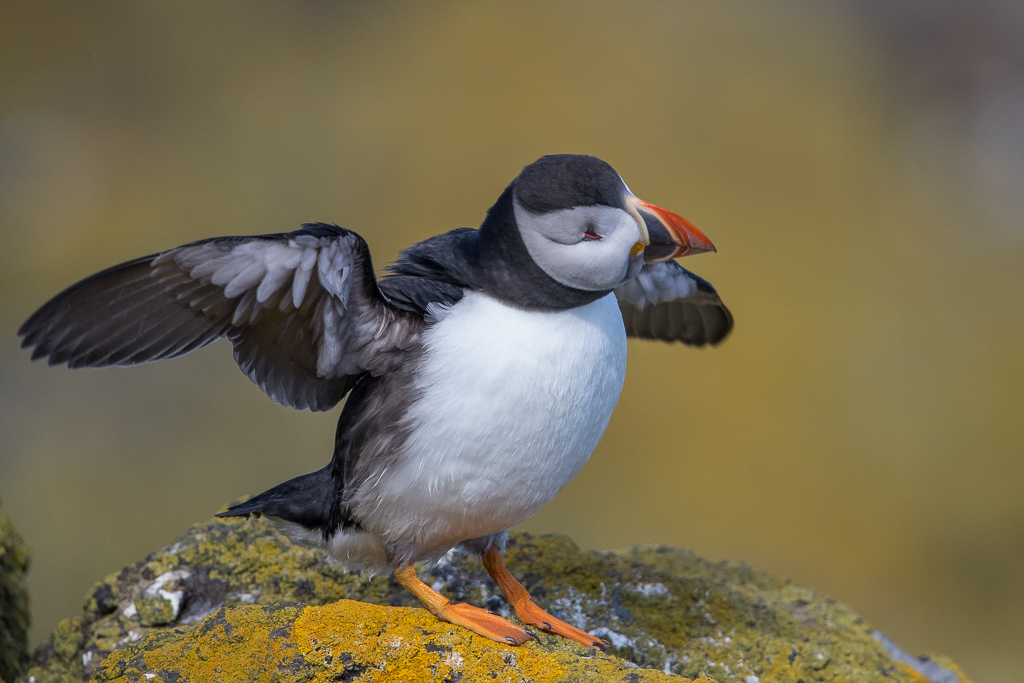 and they are oh so cute.
Irresistible even.
The one word of warning though is that you shouldn't hang around with the same birds for too long. Yes they will stand and pose for you for ages but that's because you are seen as a potential threat and you are probably somewhere between the bird and the entrance to the nest burrow. Approach too close and there is every chance they will fly, sometimes making several huge circuits before returning to land in the same spot. The same happens when Lesser Black-backed Gulls attack them in the hope of getting them to drop their fish.
The Puffin is the smallest sea bird on the Isle of May and bottom of the food chain to a large extent. The adults aren't predated to a great extent although I have seen a Greater Black-back taking one, it's the chicks that are most in danger but that is only when they have just left their nest and heading to the sea. The bigger threat is to their food supply. Puffins can fly as far as 80 miles out to sea to find a food source but when they return to the island they are often attacked by the gulls in the hope they can be persuaded to drop their food. There are different forms of attack too, sometimes launched in the air, sometimes on the ground. Much depends it seems on the positioning of the burrows from what I could see. If a burrow entrance is in open ground it's easy for the gulls to wait near the entrance but if they are surrounded by long Sea Campion plants even the Puffins can't always make a direct approach. It's sad to see a Puffin lose it's catch but that's the way it is. The Gulls have evolved by being efficient scavengers, they even team up in gangs to hijack a single Puffin. Possibly that's why Puffins are able to catch many fish at once so that when they do get through, they have a good food supply for what is usually just a single chick or Pufflet.
Anyway, it makes fascinating watching. The researchers on the island spend hours doing so as well as monitoring catch sizes which indicate the health of our seas.
The one thing I haven't previously been successful with is Puffins on the water. On the Isle of May there is an artificial fresh water loch and the Puffins use it to bathe.
and they are oh so cute.
Irresistible even.
The one word of warning though is that you shouldn't hang around with the same birds for too long. Yes they will stand and pose for you for ages but that's because you are seen as a potential threat and you are probably somewhere between the bird and the entrance to the nest burrow. Approach too close and there is every chance they will fly, sometimes making several huge circuits before returning to land in the same spot. The same happens when Lesser Black-backed Gulls attack them in the hope of getting them to drop their fish.
The Puffin is the smallest sea bird on the Isle of May and bottom of the food chain to a large extent. The adults aren't predated to a great extent although I have seen a Greater Black-back taking one, it's the chicks that are most in danger but that is only when they have just left their nest and heading to the sea. The bigger threat is to their food supply. Puffins can fly as far as 80 miles out to sea to find a food source but when they return to the island they are often attacked by the gulls in the hope they can be persuaded to drop their food. There are different forms of attack too, sometimes launched in the air, sometimes on the ground. Much depends it seems on the positioning of the burrows from what I could see. If a burrow entrance is in open ground it's easy for the gulls to wait near the entrance but if they are surrounded by long Sea Campion plants even the Puffins can't always make a direct approach. It's sad to see a Puffin lose it's catch but that's the way it is. The Gulls have evolved by being efficient scavengers, they even team up in gangs to hijack a single Puffin. Possibly that's why Puffins are able to catch many fish at once so that when they do get through, they have a good food supply for what is usually just a single chick or Pufflet.
Anyway, it makes fascinating watching. The researchers on the island spend hours doing so as well as monitoring catch sizes which indicate the health of our seas.
The one thing I haven't previously been successful with is Puffins on the water. On the Isle of May there is an artificial fresh water loch and the Puffins use it to bathe.
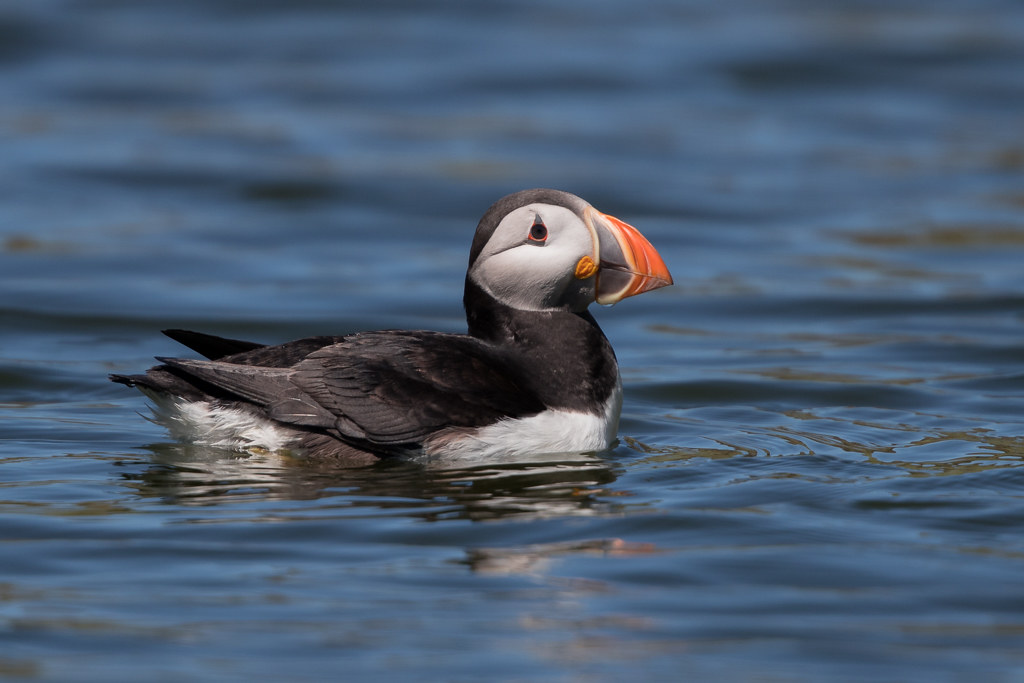 Not many people bother to go there but there is a spot where you can take near water level shots on a solid platform, unlike being on a rocking boat.
Not many people bother to go there but there is a spot where you can take near water level shots on a solid platform, unlike being on a rocking boat.
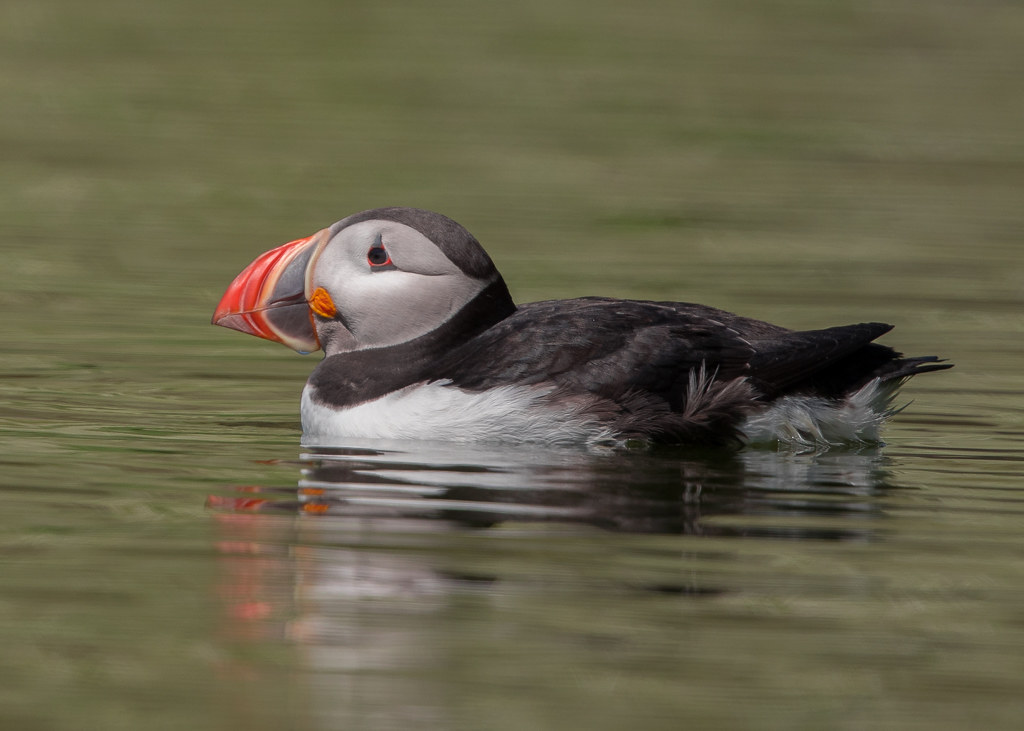 You can even choose the colour of the water reflection too! Pretty flat water too.
The last shots I took of a Puffin were the most unusual. Something I have never seen before too. A Puffin in it's burrow, well at the entrance to it anyway. Christian and I were actually on our way to the departure pier when we spotted it and hurriedly unpacked our gear. I managed two shots of not the best quality before it disappeared back inside.
You can even choose the colour of the water reflection too! Pretty flat water too.
The last shots I took of a Puffin were the most unusual. Something I have never seen before too. A Puffin in it's burrow, well at the entrance to it anyway. Christian and I were actually on our way to the departure pier when we spotted it and hurriedly unpacked our gear. I managed two shots of not the best quality before it disappeared back inside.
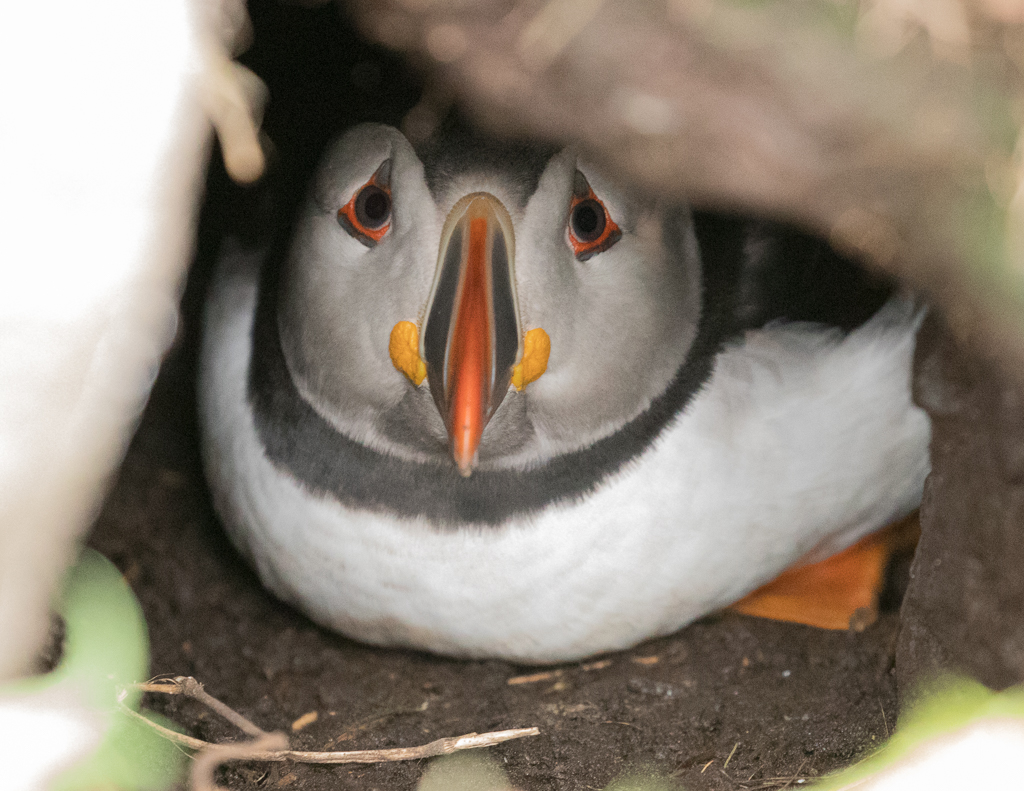 As you walk past the Puffin burrows the most you usually hear is the odd sound coming from well inside the burrow. It's a cross between sounding like ET and an old man groaning softly.
Well, that's enough about Puffins, I shall think what to share next!
T.B.C.
As you walk past the Puffin burrows the most you usually hear is the odd sound coming from well inside the burrow. It's a cross between sounding like ET and an old man groaning softly.
Well, that's enough about Puffins, I shall think what to share next!
T.B.C.
My first visit to the Isle of May staying in the bird observatory was in April, 2012 and despite the rather bleak weather and spartan living conditions I was hooked on island life. I returned again in 2013 when my visit in June coincided with a working party putting some finishing touches to the new extension to the Low Light, the living accommodation which was formerly a lighthouse.
Not only was the weather better by far, so was the living conditions. Since 2013 I have been twice, both in June or early July.
So with four visits in five years I wasn't expecting too much in the way of new bird species, or for that matter anything at all different really, but how wrong can you be ! The species may well be the same but the season was a bit late this year. I also had a new travelling companion, Christian, a German national who I met in Bulgaria 2 years ago and with whom I have become firm friends.
And so it was, arrangements made I picked Christian up at Edinburgh airport the day before we were due to sail over to The May, our room in the Travelodge pre-booked. The evening was largely spent doing some last minute provision purchases and looking for a decent traditional fish and chip shop, a Great British favourite for my European friend! Eventually we found the latter which wasn't the best but never mind. Up early the next day we headed for Anstruther, a quayside breakfast and the rib boat connection. It was also were we teamed up with four fellow " Low Lighters" who would be sharing the accommodation. All four have a strong interest in photography, two were intending making a video documentary during their time on the island so between the six of us we had a fair amount of luggage to load and transport.
The crossing was pretty rough with regular doses of cold seawater hitting us fair and square from crashing over a wave. It was the most uncomfortable trip since my very first visit by a long chalk but then, as we approached the island, the sea calmed dramatically in the lee of the wind and we had sailed gently in to the harbour. Not this time ! The winds were from the east and hit us head on as we rounded the island to the harbour entrance. The swell was quite considerable.
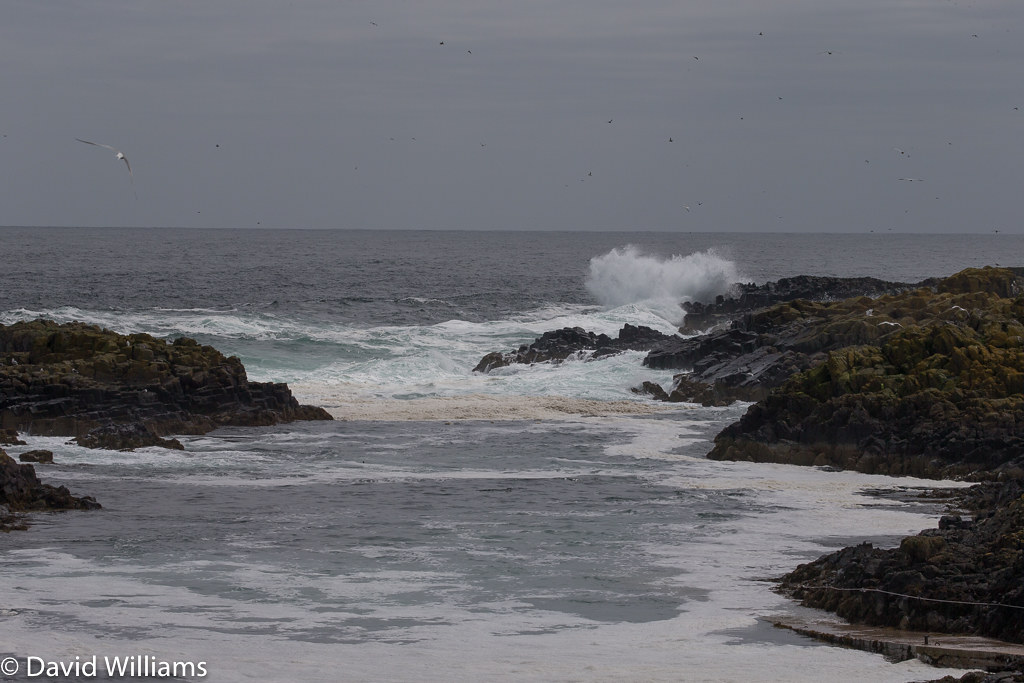 Once you got through the gap in the rocks to the entrance you had reached safety but the alternative was that you were swept on to the rocks in a huge wave.
Once you got through the gap in the rocks to the entrance you had reached safety but the alternative was that you were swept on to the rocks in a huge wave.
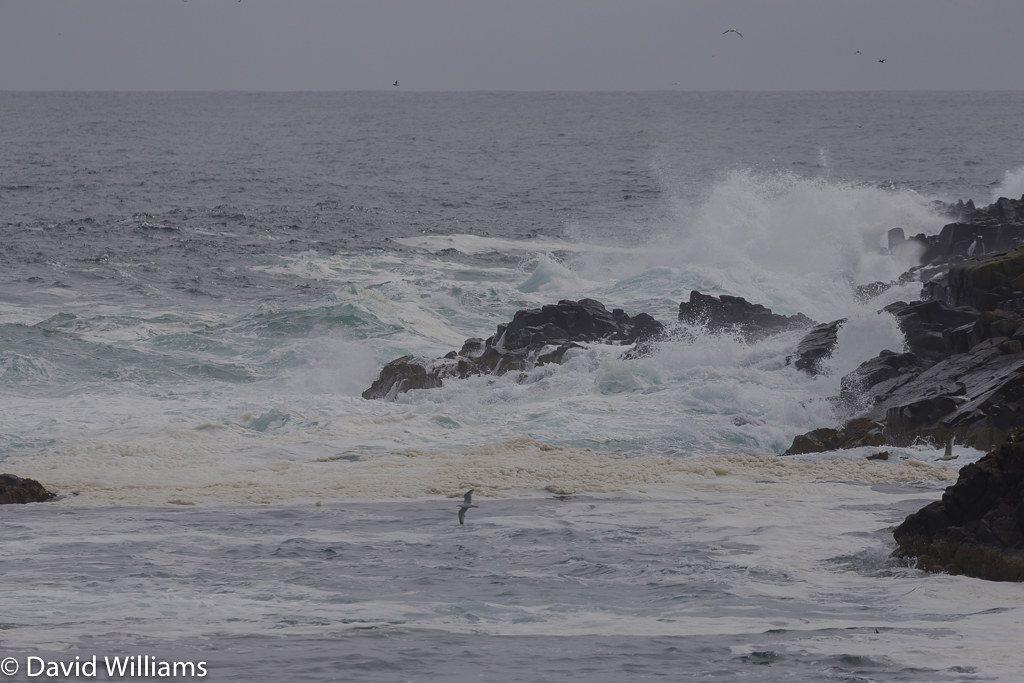 Obviously we made it! I have to say though, I did wonder and it was in no small part to the skill of our boatman, Roy. We all were in total admiration as he throttled through a gap in the waves at high speed. There is another landing stage on the then calm side of the island as seen in this photo taken when we left.
Obviously we made it! I have to say though, I did wonder and it was in no small part to the skill of our boatman, Roy. We all were in total admiration as he throttled through a gap in the waves at high speed. There is another landing stage on the then calm side of the island as seen in this photo taken when we left.
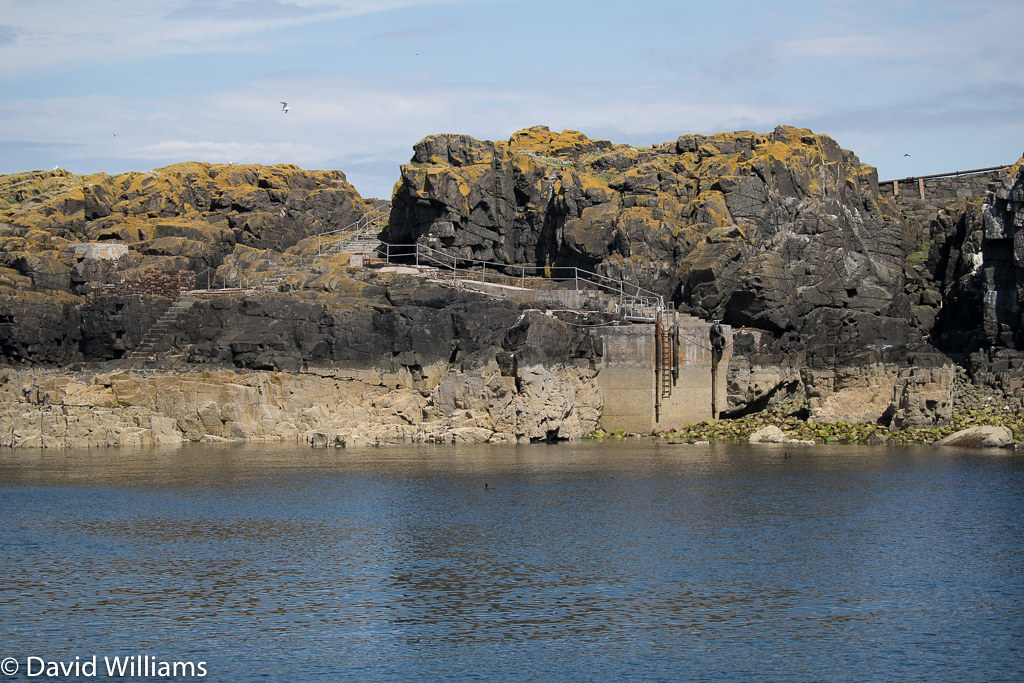 With all our luggage though, landing there would have been impractical as the ladders are too steep to haul up our heavy gear.
The tour boats later in the day landed there though.
There are two ways of getting on to the May. You can go for the day and have 2-3 hours on shore or you can apply to stay for a week. It's a long time on a small island for some folk to even consider. You need to take sufficient provisions to last the week, maybe a bit more in case you are marooned on there if the weather is bad but once you are there the island is yours to wander although you have to stick to the official paths because the whole island is full of fragile Puffin burrows.
The advantages of staying on the island are obvious, you probably never have more than 16 or so people on the island once the day trippers have gone so you have to wildlife to yourself for a one on one encounter. Being fairly used to the daily disturbance of humans the birds are reasonably confiding but there again, they have to be as many are sitting on their nest or attempting to take food to their young. It's of paramount importance not to overstay your welcome in a sensitive location, particularly with the Puffins.
When we arrived the departing group we were replacing looked decidedly glum. They had had a pretty torrid week of poor weather. That's the risk you take.
The day trippers largely come on the May Princess.
With all our luggage though, landing there would have been impractical as the ladders are too steep to haul up our heavy gear.
The tour boats later in the day landed there though.
There are two ways of getting on to the May. You can go for the day and have 2-3 hours on shore or you can apply to stay for a week. It's a long time on a small island for some folk to even consider. You need to take sufficient provisions to last the week, maybe a bit more in case you are marooned on there if the weather is bad but once you are there the island is yours to wander although you have to stick to the official paths because the whole island is full of fragile Puffin burrows.
The advantages of staying on the island are obvious, you probably never have more than 16 or so people on the island once the day trippers have gone so you have to wildlife to yourself for a one on one encounter. Being fairly used to the daily disturbance of humans the birds are reasonably confiding but there again, they have to be as many are sitting on their nest or attempting to take food to their young. It's of paramount importance not to overstay your welcome in a sensitive location, particularly with the Puffins.
When we arrived the departing group we were replacing looked decidedly glum. They had had a pretty torrid week of poor weather. That's the risk you take.
The day trippers largely come on the May Princess.
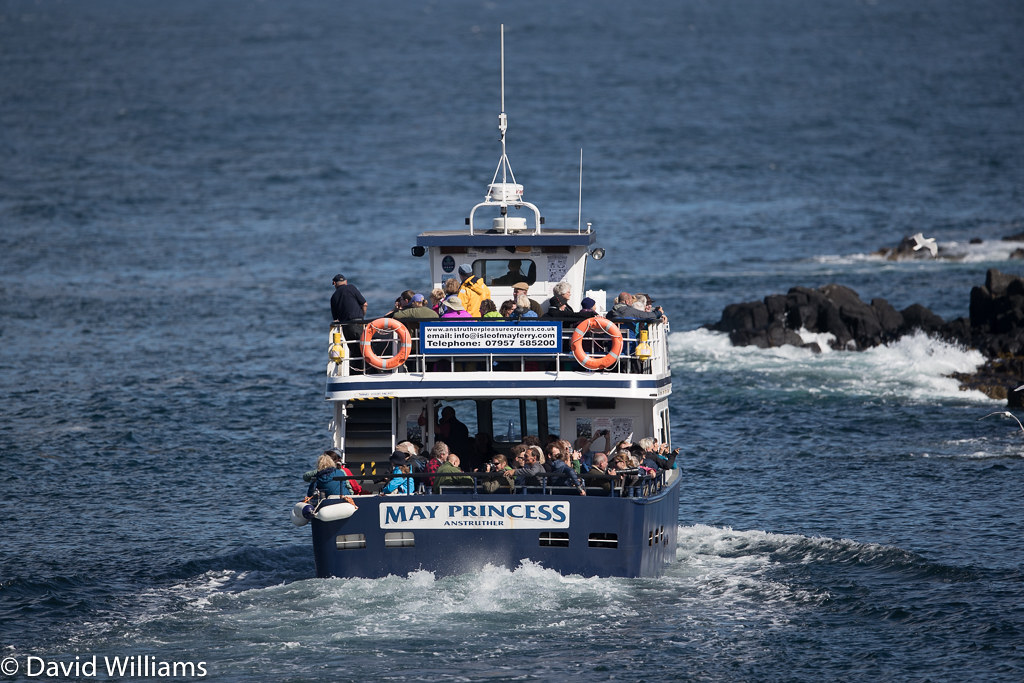 It's licensed to carry about 100 passengers and takes about an hour to travel in each direction. A day trip costs £25.
Alternatively you can travel by rib, a faster 30 minute crossing.
It's licensed to carry about 100 passengers and takes about an hour to travel in each direction. A day trip costs £25.
Alternatively you can travel by rib, a faster 30 minute crossing.
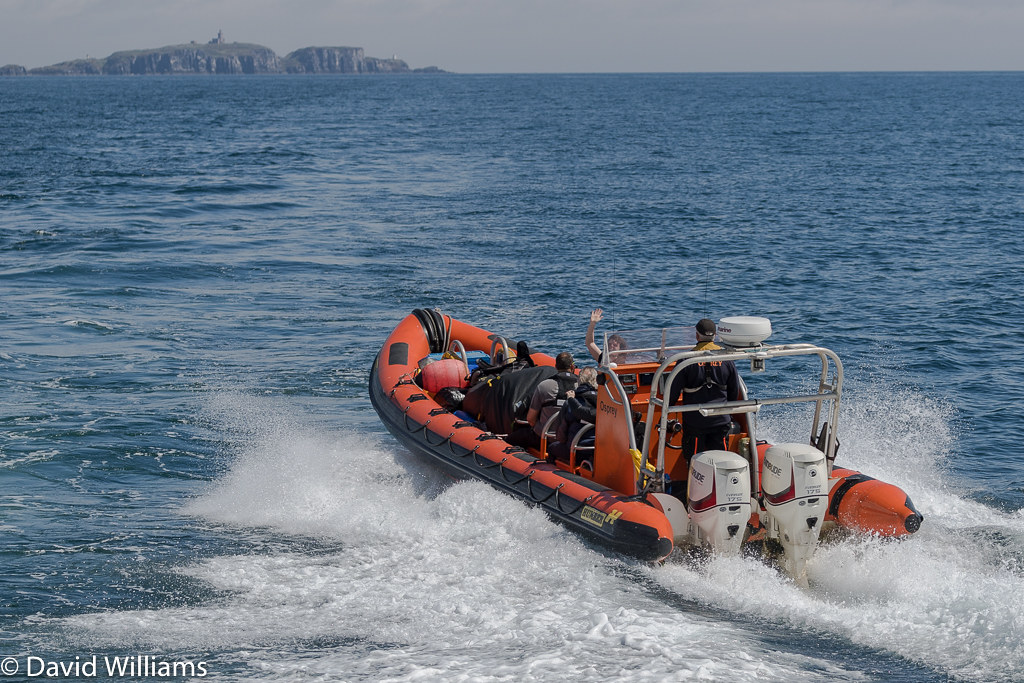 That shot was the party replacing ours heading out to the May on a nice sunny day. Christian and I had had to catch an earlier sailing to ensure I got him back to the airport on time and I have to say, it was pleasant way to travel with probably better opportunities for seawtaching en route.
In rougher weather you would have to dress for the ribs.
That shot was the party replacing ours heading out to the May on a nice sunny day. Christian and I had had to catch an earlier sailing to ensure I got him back to the airport on time and I have to say, it was pleasant way to travel with probably better opportunities for seawtaching en route.
In rougher weather you would have to dress for the ribs.
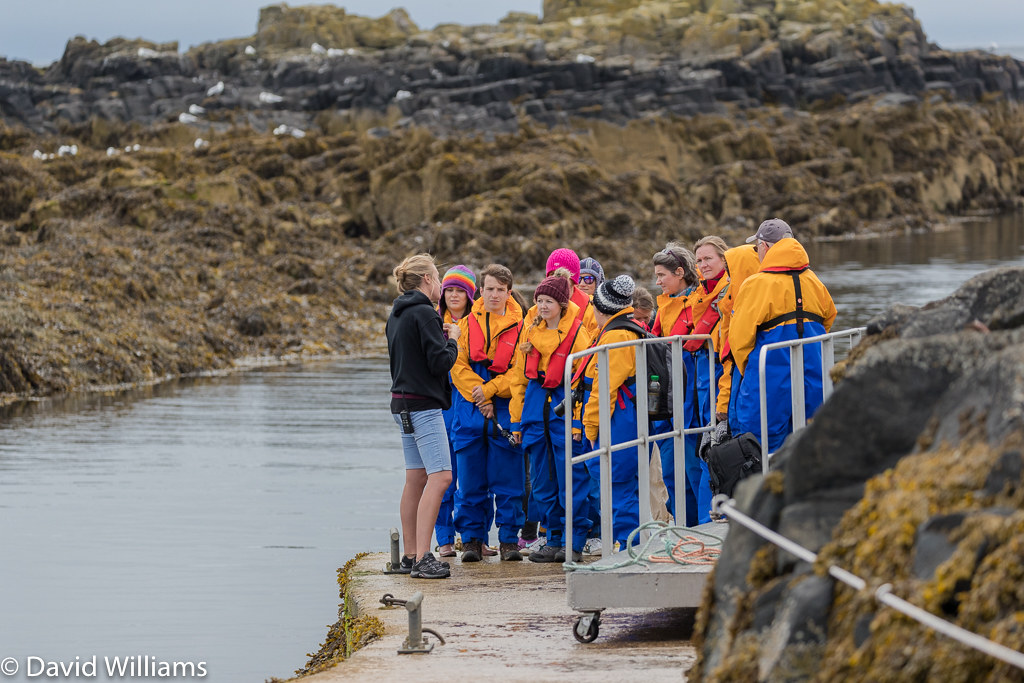 The above party are being briefed by the assistant warden before being let loose on the island!
Of the island itself, it's about 5 miles from the mainland and was the site of an early Christian settlement. The remains of the abbey can still be seen. The island lies in a strategic position in the Firth of Forth and is the site of Scotlands earliest Lighthouse, one that predates the defunct Low Light.
The above party are being briefed by the assistant warden before being let loose on the island!
Of the island itself, it's about 5 miles from the mainland and was the site of an early Christian settlement. The remains of the abbey can still be seen. The island lies in a strategic position in the Firth of Forth and is the site of Scotlands earliest Lighthouse, one that predates the defunct Low Light.
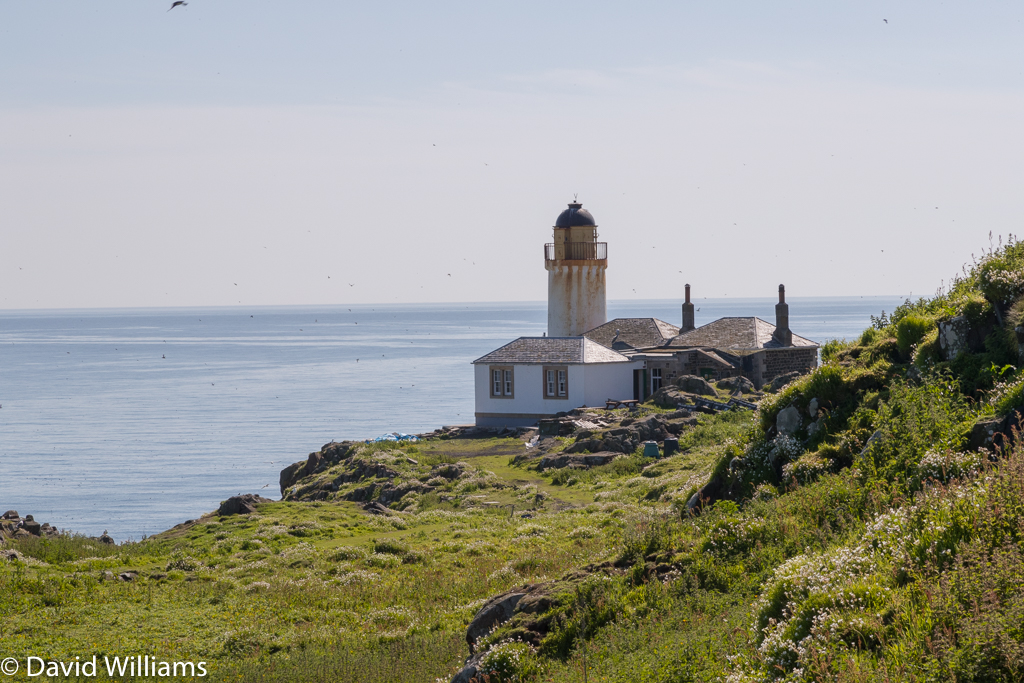 There is still an operational lighthouse, aptly named the High Light!
There is still an operational lighthouse, aptly named the High Light!
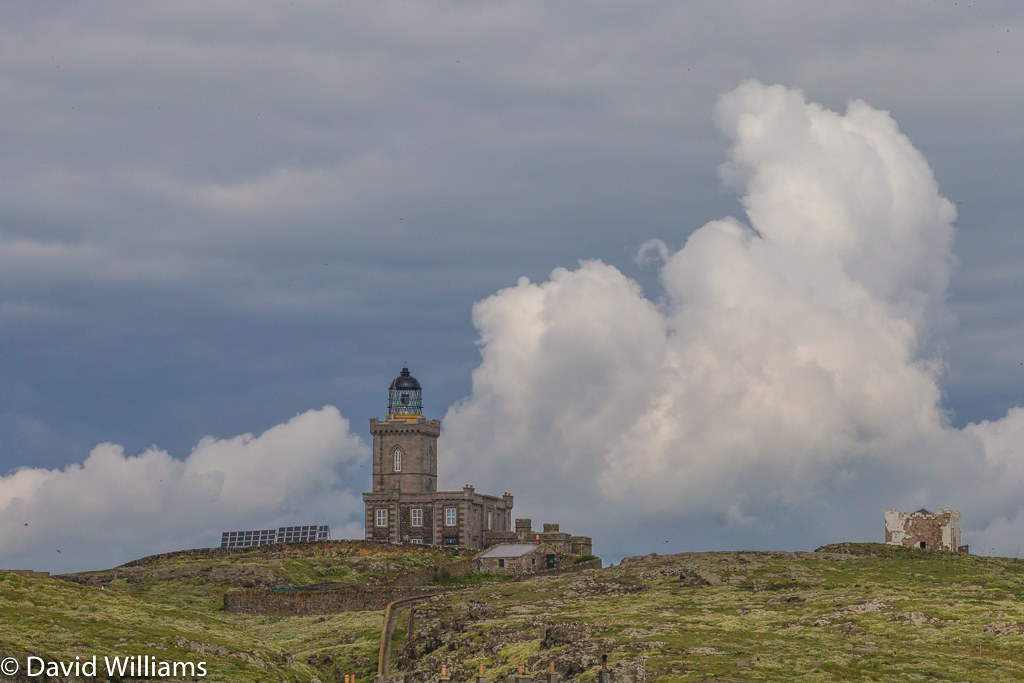 As from this year it is powered by solar panels which can be seen in the picture and it's also open to visitors for an hour each day at the weekends only. (You can also see the original lighthouse remains to the right of the High Light and that was a bonfire lit on a tower!)
The views from the top give a scale of the island.
As from this year it is powered by solar panels which can be seen in the picture and it's also open to visitors for an hour each day at the weekends only. (You can also see the original lighthouse remains to the right of the High Light and that was a bonfire lit on a tower!)
The views from the top give a scale of the island.
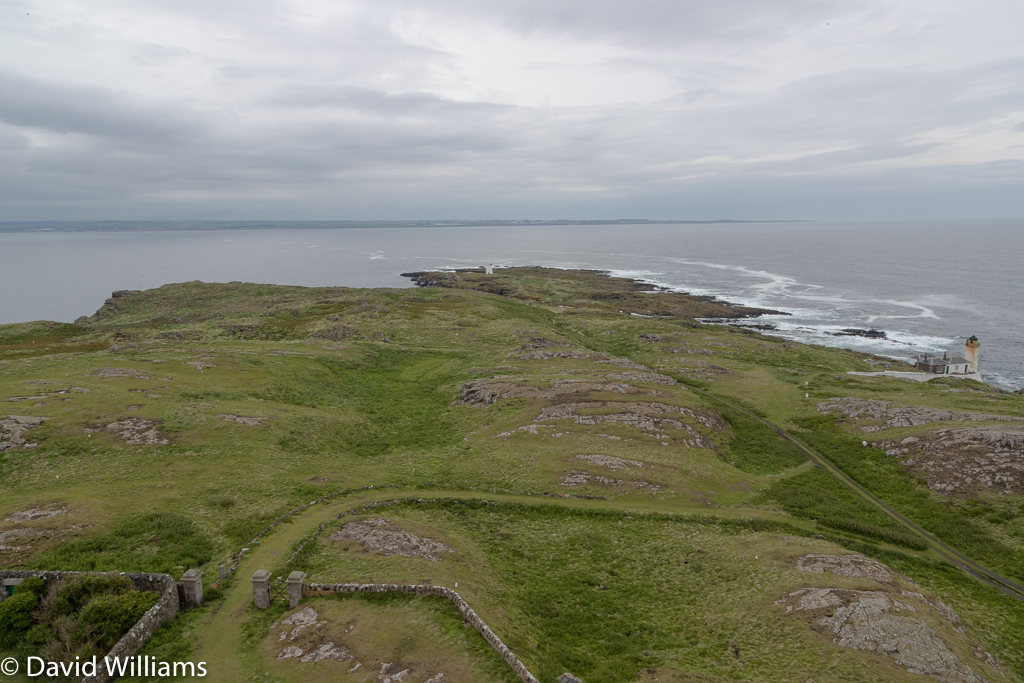 Looking north towards St Andrews, south towards North Berwick
Looking north towards St Andrews, south towards North Berwick
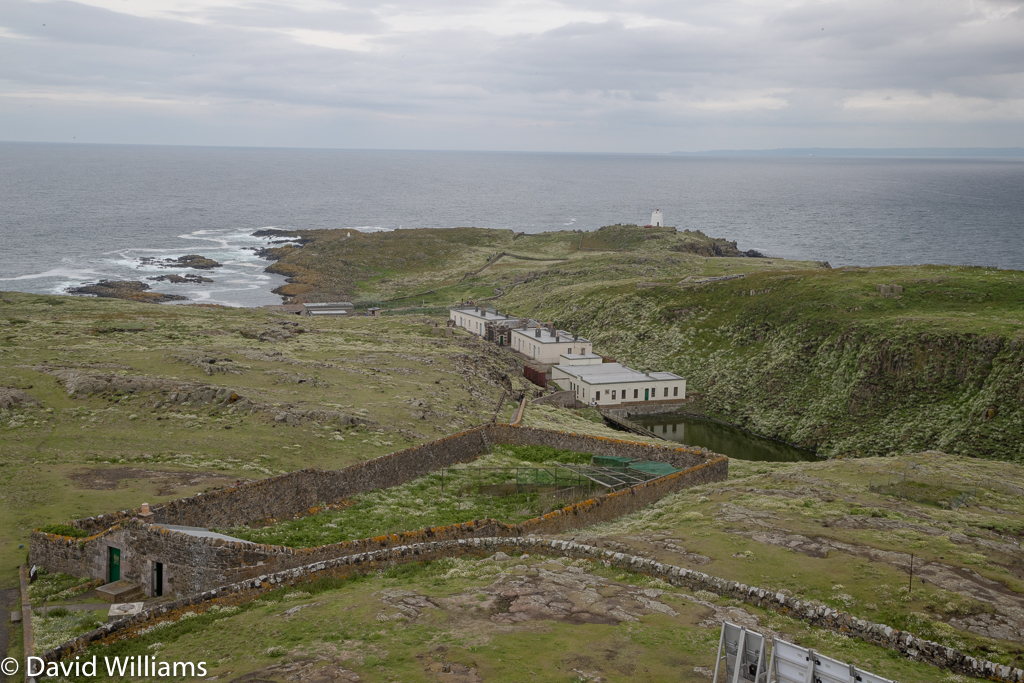 In addition to the Lighthouses at either end of the island there is the remaining buildings that house the steam driven fog horns, All this was generated from the buildings in the centre of the island that now house the warden and researchers accommodation.
So what do they research? Birds of course, but also the Grey Seal population too although most of the latter goes on in winter.
As for the birds, I don't have accurate information but I do know there are around 46,000 breeding pairs of Puffin and 3000 pairs of Kittiwake. Huge numbers of Guillemot and Razorbill line the cliffs, thousands of Lesser Black-backed and Herring Gulls as well as a few Greater Black-backed pairs nest on the ground along with many hundred Terns which seem to have grown in number dramatically in the last year or so. Largely Artic, there are also some Common Terns and for the first time a pair of Sandwich as well. There is a hope they might entice some Roseate too in due course. They have been seen regularly roosting in the harbour but sadly they weren't there when I was! Well, not this time anyway.
Also making up the numbers are a large colony of Shags, here you can see the ringing team undertaking the rather precarious job of doing so. 600 chicks have been ringed so far this year.
In addition to the Lighthouses at either end of the island there is the remaining buildings that house the steam driven fog horns, All this was generated from the buildings in the centre of the island that now house the warden and researchers accommodation.
So what do they research? Birds of course, but also the Grey Seal population too although most of the latter goes on in winter.
As for the birds, I don't have accurate information but I do know there are around 46,000 breeding pairs of Puffin and 3000 pairs of Kittiwake. Huge numbers of Guillemot and Razorbill line the cliffs, thousands of Lesser Black-backed and Herring Gulls as well as a few Greater Black-backed pairs nest on the ground along with many hundred Terns which seem to have grown in number dramatically in the last year or so. Largely Artic, there are also some Common Terns and for the first time a pair of Sandwich as well. There is a hope they might entice some Roseate too in due course. They have been seen regularly roosting in the harbour but sadly they weren't there when I was! Well, not this time anyway.
Also making up the numbers are a large colony of Shags, here you can see the ringing team undertaking the rather precarious job of doing so. 600 chicks have been ringed so far this year.
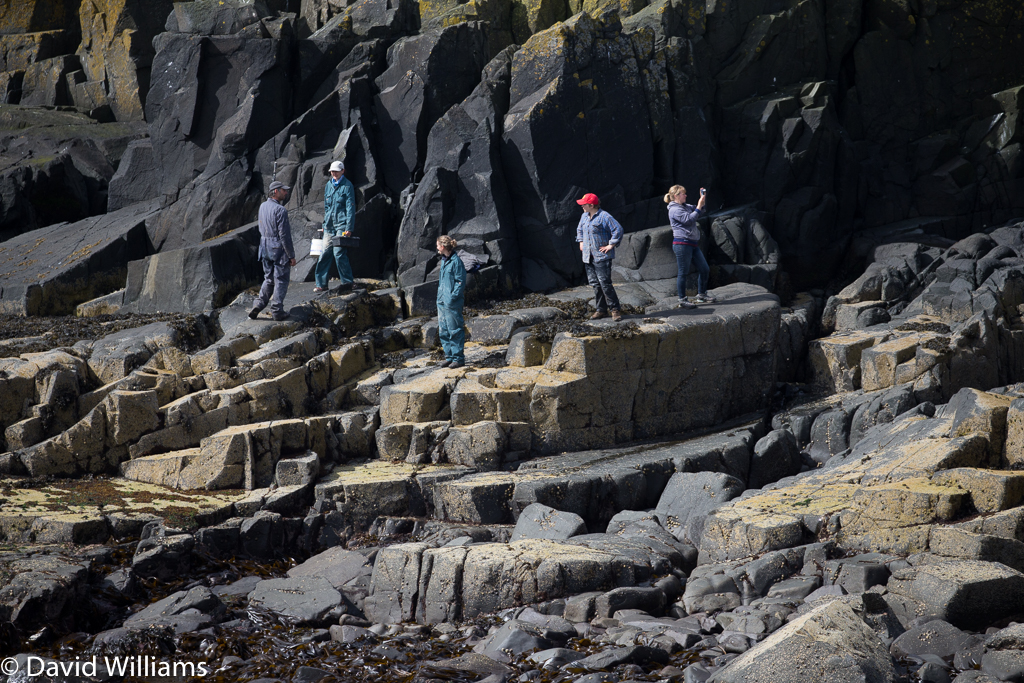 Eider ducks are numerous too although only the females and their ducklings are on the island in Summer, the males long gone. Finally a few Oystercatchers, Pied Wagtails, Wrens, Rock Pipits, Feral Pigeons, Starlings and even a pair of breeding House Swallows just about wrap up the list. The only transient I saw was a single Chiffchaff, one of the others spotted a Siskin but all in all in June it's all about the seabird colonies.
I don't intend giving a daily account of what I saw but rather just share some photos and observations I made during the course of the week.
Hope you enjoy looking.
cheers Dave
T.B.C.
Eider ducks are numerous too although only the females and their ducklings are on the island in Summer, the males long gone. Finally a few Oystercatchers, Pied Wagtails, Wrens, Rock Pipits, Feral Pigeons, Starlings and even a pair of breeding House Swallows just about wrap up the list. The only transient I saw was a single Chiffchaff, one of the others spotted a Siskin but all in all in June it's all about the seabird colonies.
I don't intend giving a daily account of what I saw but rather just share some photos and observations I made during the course of the week.
Hope you enjoy looking.
cheers Dave
T.B.C.
We might not have been away for long but at the time we seemed to have had longer than was actually the case. Daylight hours virtually 24/7 means you can maximise your days as you wish and we had certainly put a lot of waking hours in to our week.
Still, it was time to hit the road again and head south. Packing all done the night before we still had an hour or so locally before deciding to make breakfast.
Another crack at the drumming Snipe.
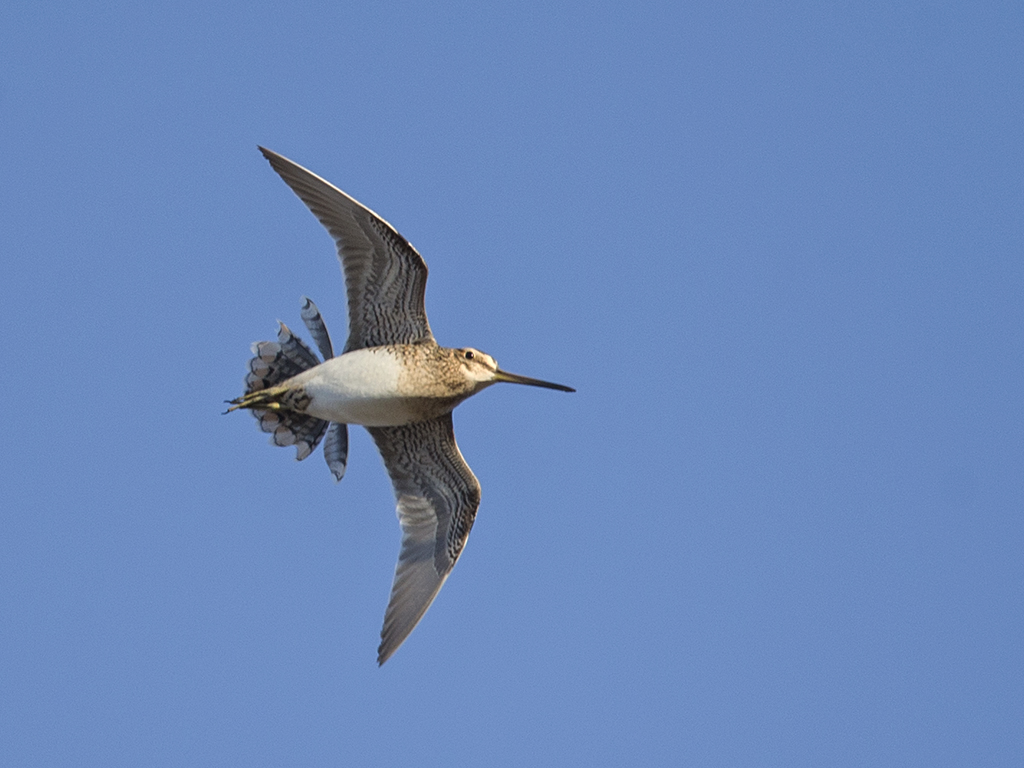 Over the week I must have taken a couple of hundred with very view worth keeping.
Over the week I must have taken a couple of hundred with very view worth keeping.
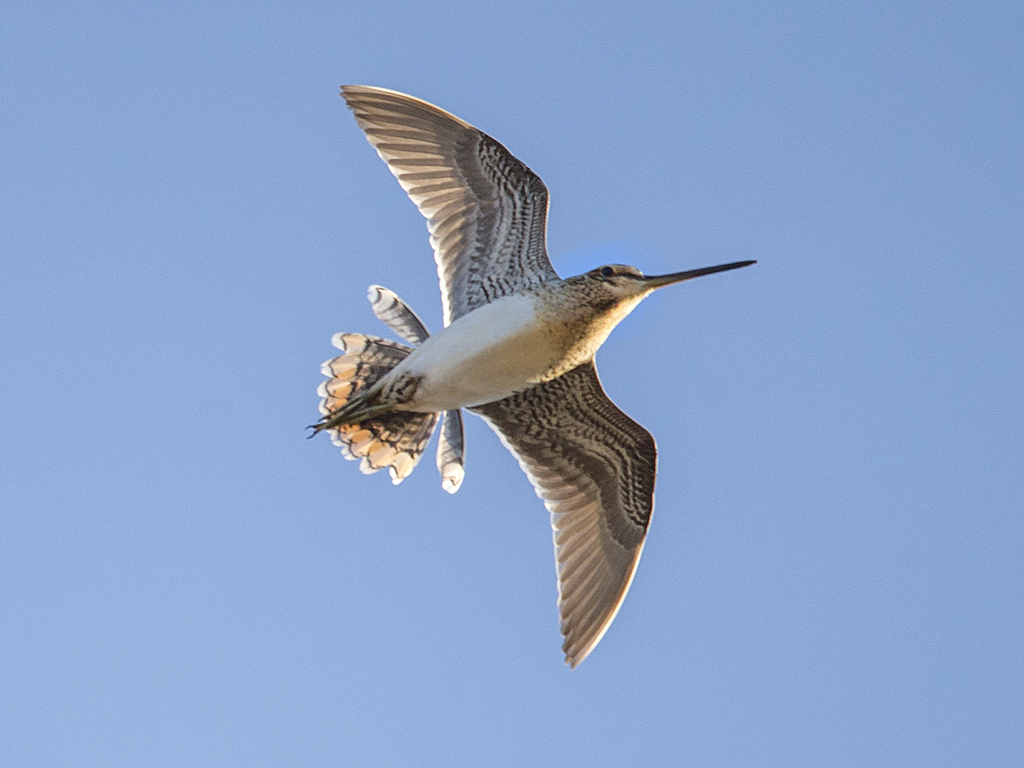 A passing Raven was a much easier target.
A passing Raven was a much easier target.
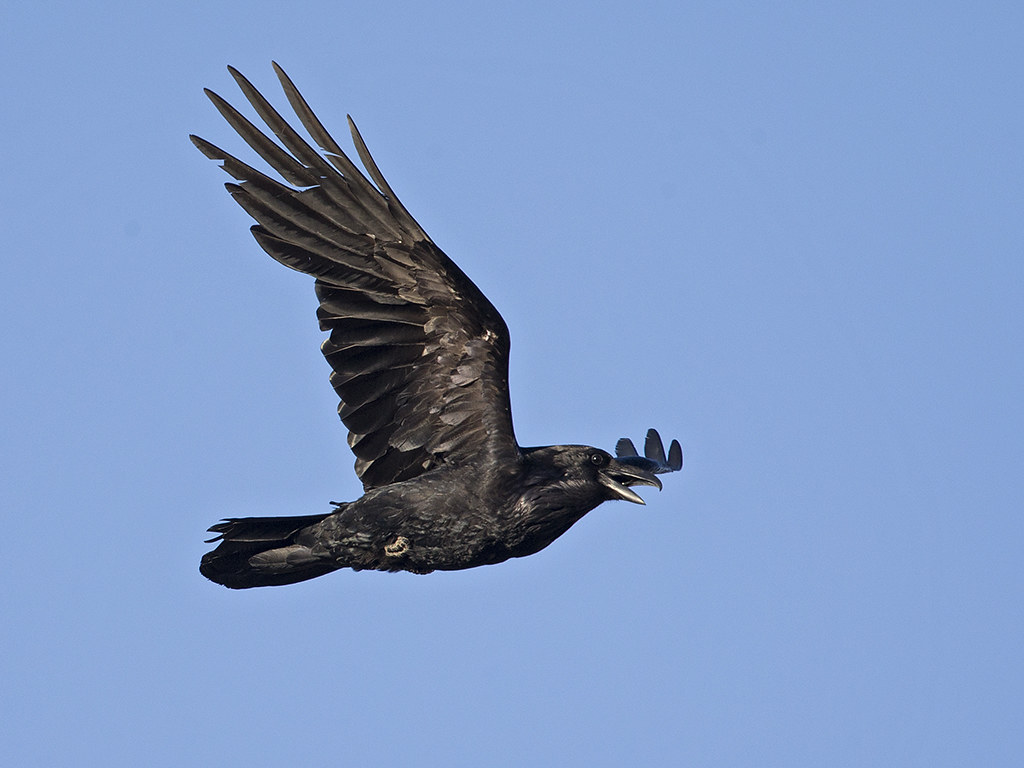 However, we didn't want to hang around too long as we had set ourselves to targets for the day and our journey southwards.
The Black Guillemots at Akureyri and the Skuas at Borgarnes bridge.
An 8.00am departure was agreed which was no problem when you are up before 5.00am. However, Mike was back in the lead 4-2 with his early rising!
It was a little sad to leave behind what had become our very comfortable home for the last few days.
The spacious dining room our hub.
However, we didn't want to hang around too long as we had set ourselves to targets for the day and our journey southwards.
The Black Guillemots at Akureyri and the Skuas at Borgarnes bridge.
An 8.00am departure was agreed which was no problem when you are up before 5.00am. However, Mike was back in the lead 4-2 with his early rising!
It was a little sad to leave behind what had become our very comfortable home for the last few days.
The spacious dining room our hub.
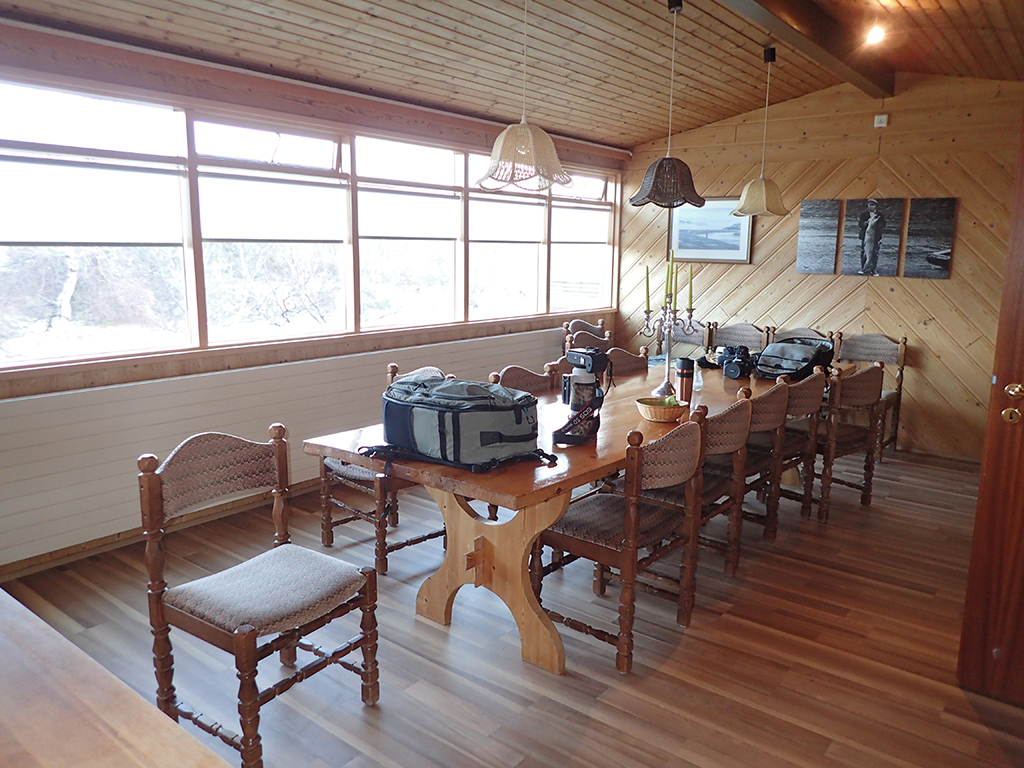 We had totally ignored the lounge .
We had totally ignored the lounge .
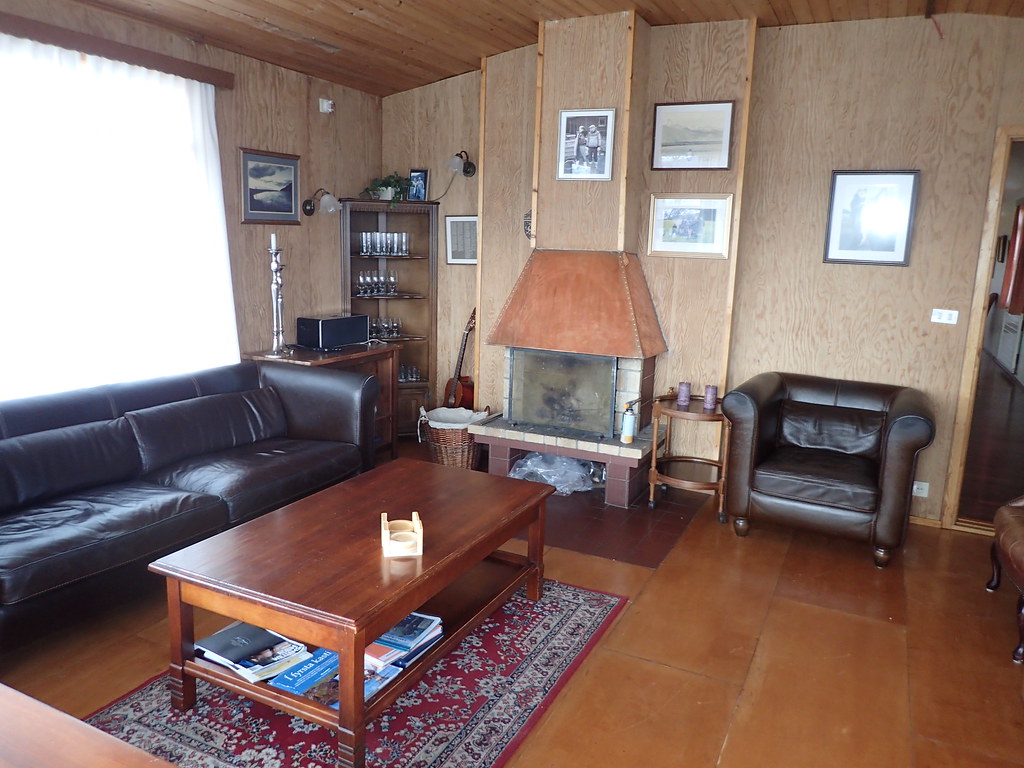 but had made good use of our particularly well equipped kitchen with it's industrial sized everything. .
but had made good use of our particularly well equipped kitchen with it's industrial sized everything. .
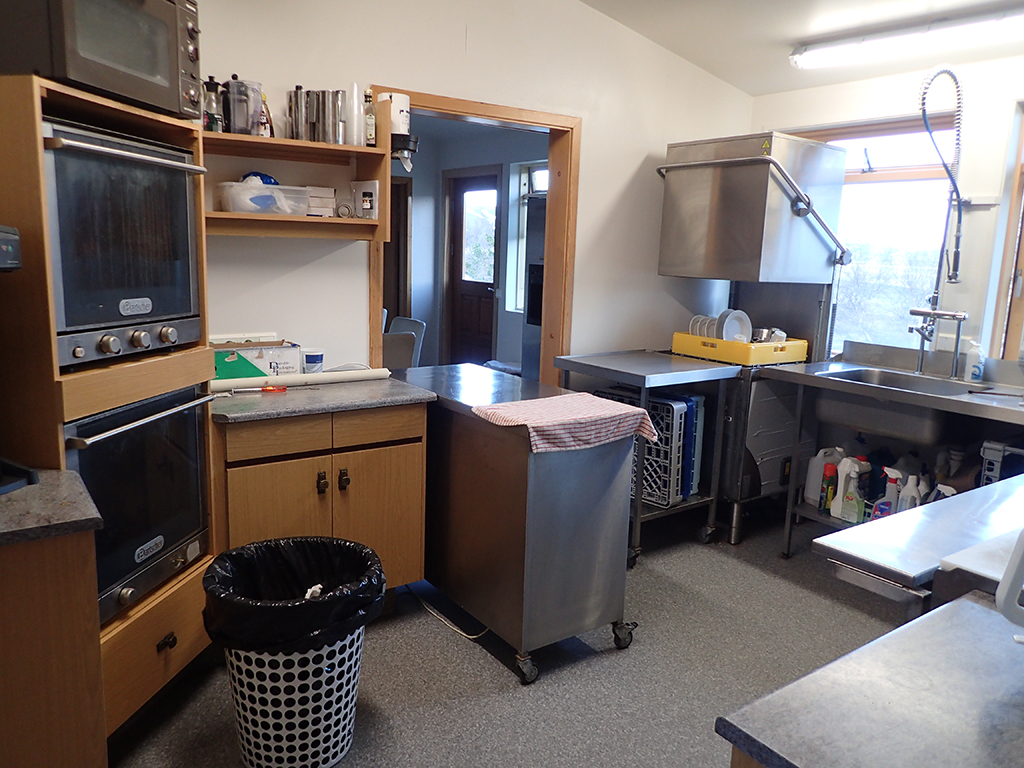 So with another 1.8 litres of freshly brewed coffee consumed ( no wonder we were up early!) we were on our way south.
A stunning morning once again, we were not in a great hurry so of course stopped for a Redwing showing nicely.
So with another 1.8 litres of freshly brewed coffee consumed ( no wonder we were up early!) we were on our way south.
A stunning morning once again, we were not in a great hurry so of course stopped for a Redwing showing nicely.
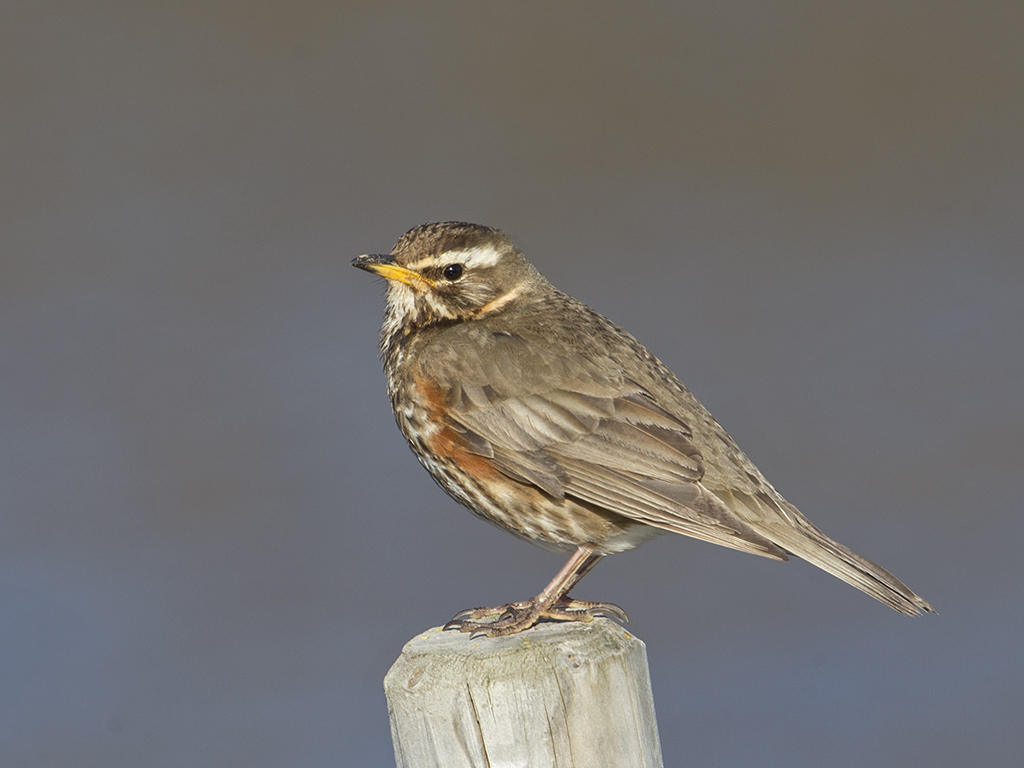 but the real beauty for me was a close up Snipe.
but the real beauty for me was a close up Snipe.
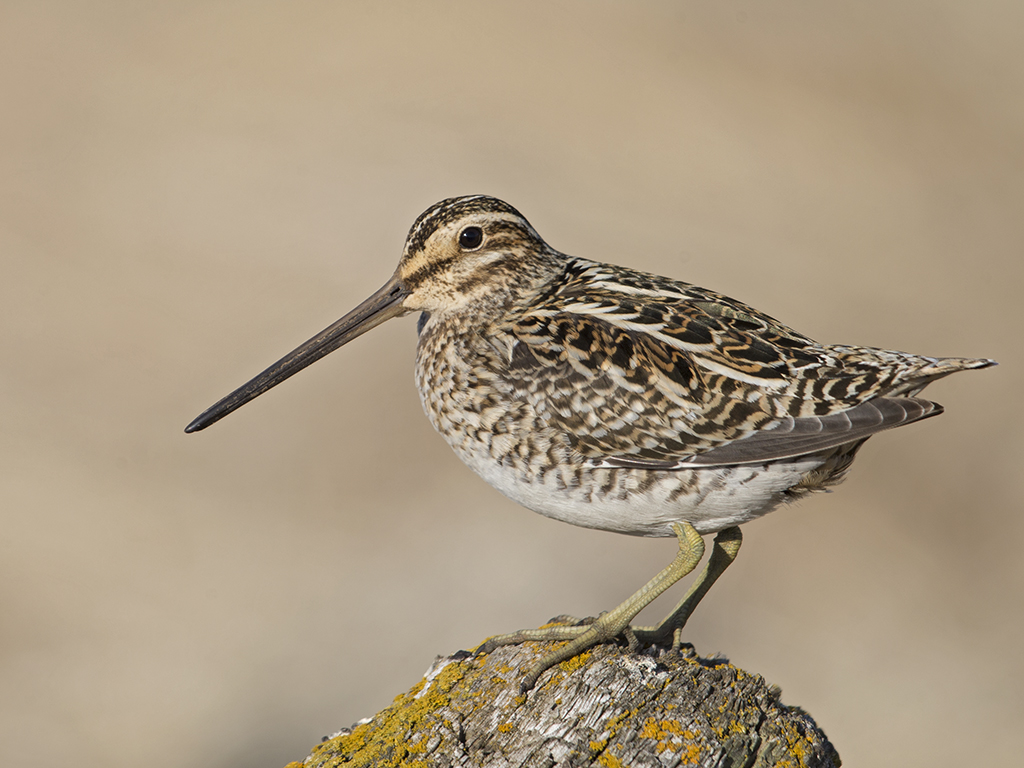 He even let out a quick call especially for the camera.
He even let out a quick call especially for the camera.
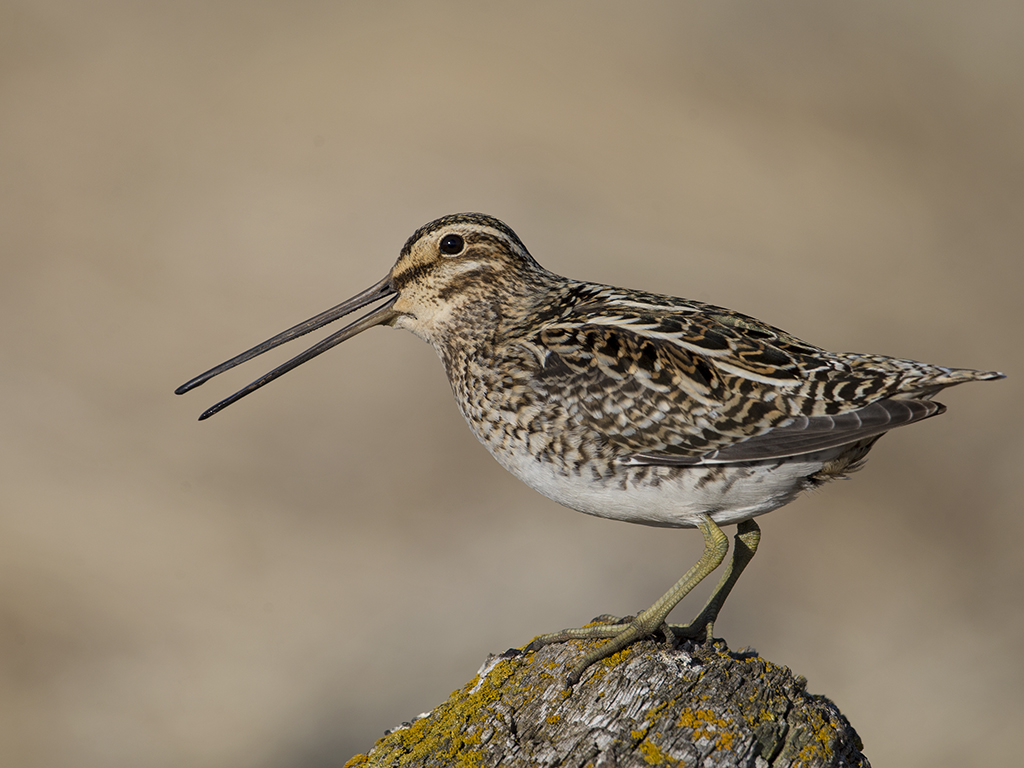 As it happened, it was a lucky encounter as we had missed the turn off for route 1. Needless to say, the blame was mine as I was allegedly navigating. Half an hour lost but worth it in retrospect!
We arrived in Akureyri but were hugely disappointed to find not a single Guillemot to be seen so onwards we went. Our only distraction was another pair of Great Northern Divers in yet another lake and again, a few feet from the road. Of course by the time we had stopped, turned around and gone back it was a typical rear view from a distance. Curse those beauties!
A pair that were far more obliging were these Slavonian Grebes found in yet another spot.
As it happened, it was a lucky encounter as we had missed the turn off for route 1. Needless to say, the blame was mine as I was allegedly navigating. Half an hour lost but worth it in retrospect!
We arrived in Akureyri but were hugely disappointed to find not a single Guillemot to be seen so onwards we went. Our only distraction was another pair of Great Northern Divers in yet another lake and again, a few feet from the road. Of course by the time we had stopped, turned around and gone back it was a typical rear view from a distance. Curse those beauties!
A pair that were far more obliging were these Slavonian Grebes found in yet another spot.
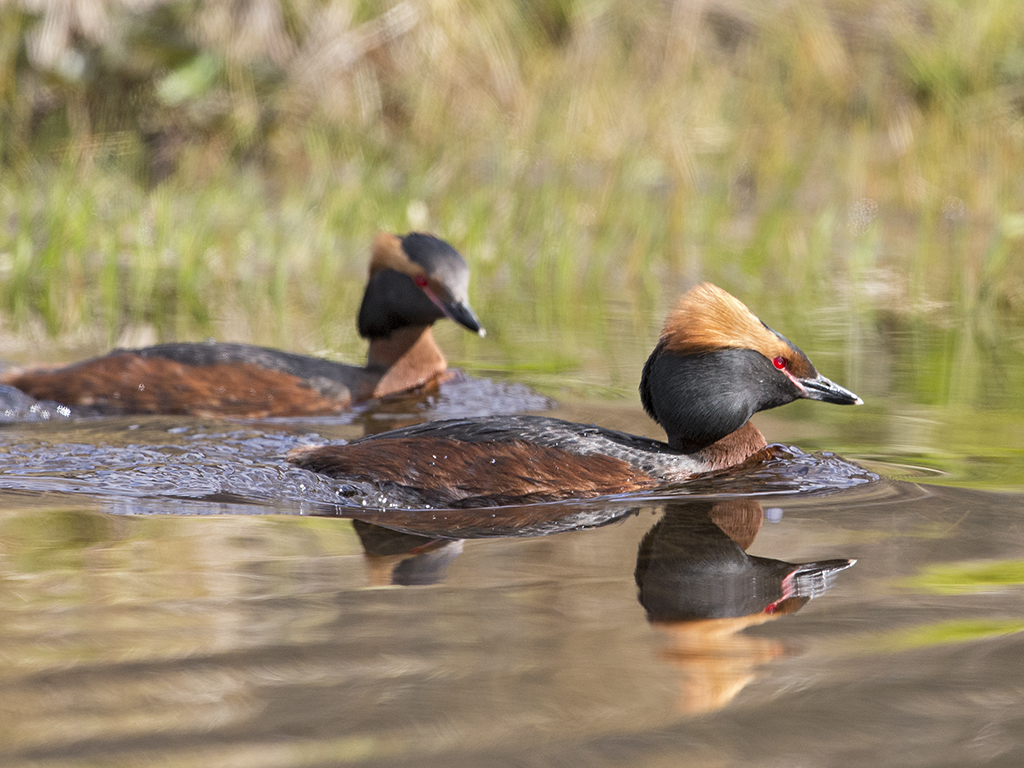 The sun was pretty bright by now so photographic conditions a bit more tricky.
The sun was pretty bright by now so photographic conditions a bit more tricky.
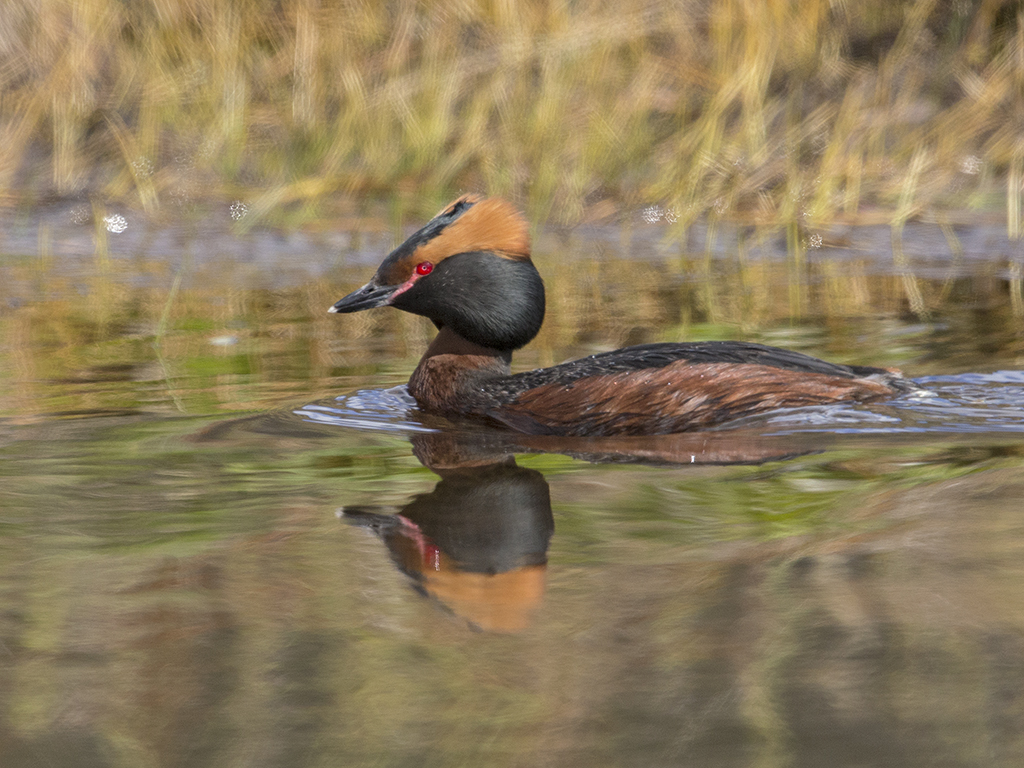 We continued on with little else recorded although we were both fairly certain we got a glimpse of a Merlin when passing through some moorland.
Borgarnes came and went with not a Skua to be seen, once again, the tide was out so all activity was a long way off so we didn't even stop.
Our "tick list" for the trip was somewhere between 55-60. Mike had done a quick tally and I had seen everything he had except for Purple Sandpiper. Our final spot was in Keflavik where there were large numbers of Brent Geese grazing in a field.
We continued on with little else recorded although we were both fairly certain we got a glimpse of a Merlin when passing through some moorland.
Borgarnes came and went with not a Skua to be seen, once again, the tide was out so all activity was a long way off so we didn't even stop.
Our "tick list" for the trip was somewhere between 55-60. Mike had done a quick tally and I had seen everything he had except for Purple Sandpiper. Our final spot was in Keflavik where there were large numbers of Brent Geese grazing in a field.
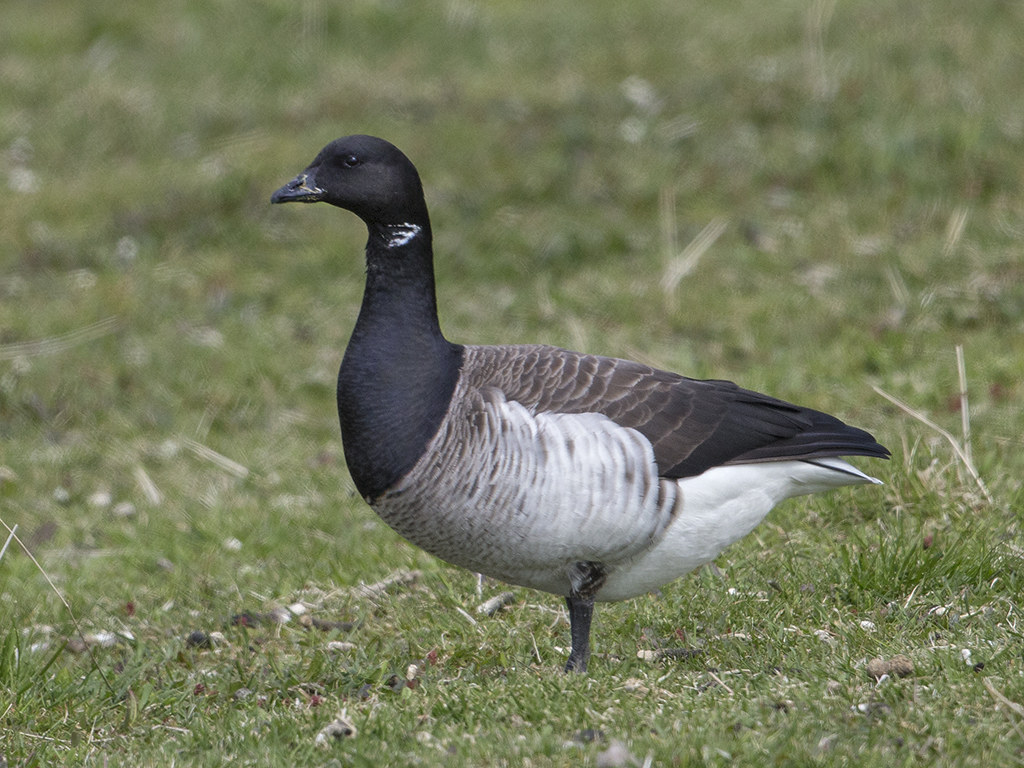 After looking for some convenient spots to no avail we decided to call it a day. We were both "birded out" by now.
We checked in to our marvellous overnight accommodation.
After looking for some convenient spots to no avail we decided to call it a day. We were both "birded out" by now.
We checked in to our marvellous overnight accommodation.
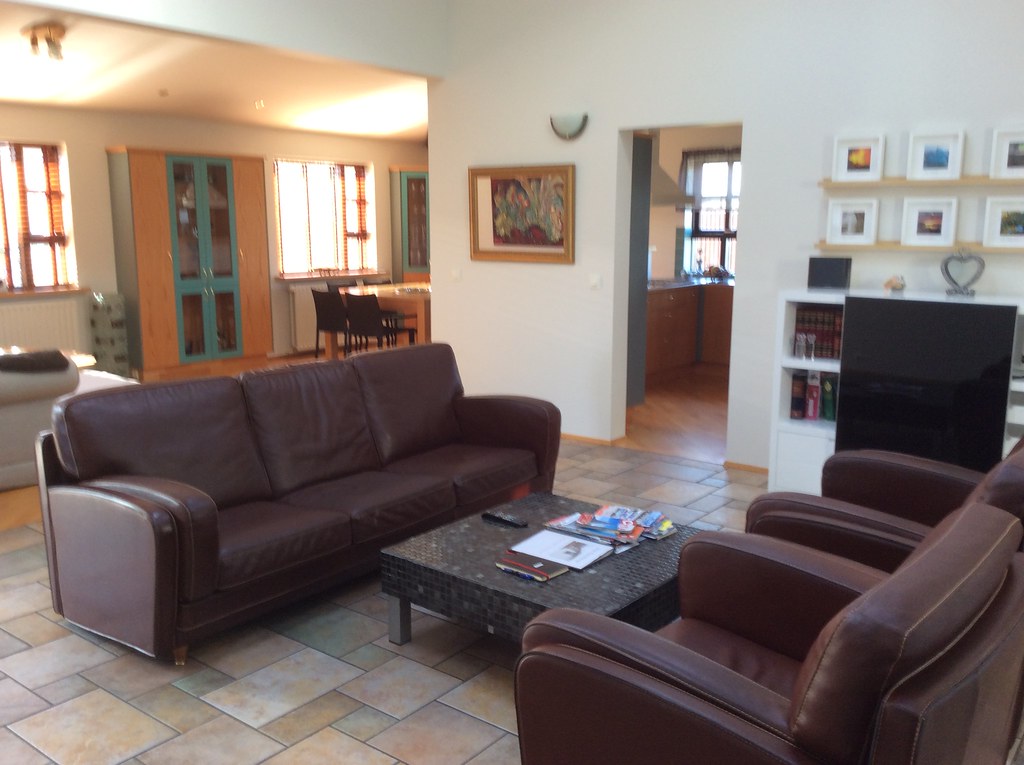 The ultra modern "Rose Cottage" , a four bedroomed bungalow which we had to ourselves as the other 2 rooms were occupied by late night arrivals who we never met. This guest house is brilliantly situated for the airport and as with other places don't be put off by the description of "Guest House", shared bathroom even.
We had dropped lucky in our choices perhaps, but I wouldn't hesitate to go down the same route again.
Our total expenditure for the seven nights including petrol,food, accommodation and sundries came to £629 each so, with flights and car hire costs the total cost of the trip was under £1k. Had we gone mad on drink it might have been considerably higher. Our last night's meal, a Chinese, was the most expensive purely because we had a couple of beers each at around £5 a can. That's not far off the price of beer in the UK, mind you the food was very reasonable there too with by far the best deep fried fish with sweet and sour sauce ( which was't so good) for less than £10.
Whilst we were there we both decided we probably wouldn't go back for another birding trip as we had seen most of what is commonly on offer. That said, the lure of the Northern Lights, the stunning scenery and some unfinished business might have me changing my mind.
The ultra modern "Rose Cottage" , a four bedroomed bungalow which we had to ourselves as the other 2 rooms were occupied by late night arrivals who we never met. This guest house is brilliantly situated for the airport and as with other places don't be put off by the description of "Guest House", shared bathroom even.
We had dropped lucky in our choices perhaps, but I wouldn't hesitate to go down the same route again.
Our total expenditure for the seven nights including petrol,food, accommodation and sundries came to £629 each so, with flights and car hire costs the total cost of the trip was under £1k. Had we gone mad on drink it might have been considerably higher. Our last night's meal, a Chinese, was the most expensive purely because we had a couple of beers each at around £5 a can. That's not far off the price of beer in the UK, mind you the food was very reasonable there too with by far the best deep fried fish with sweet and sour sauce ( which was't so good) for less than £10.
Whilst we were there we both decided we probably wouldn't go back for another birding trip as we had seen most of what is commonly on offer. That said, the lure of the Northern Lights, the stunning scenery and some unfinished business might have me changing my mind.
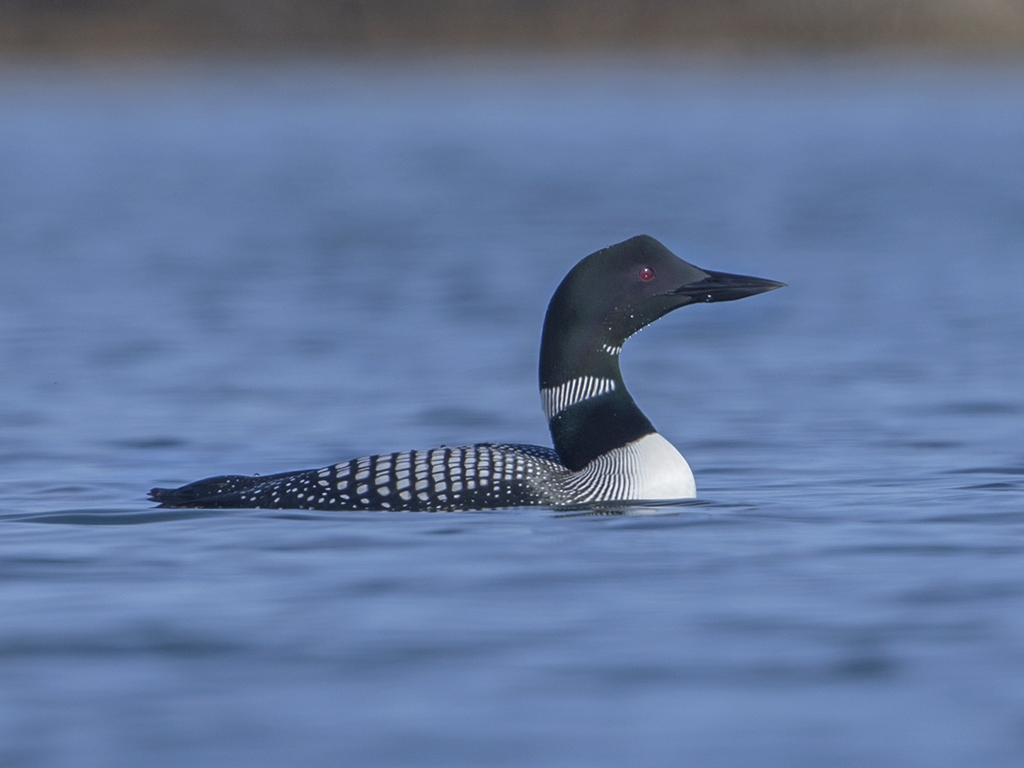 We'll see!
However, I hope this little sampler will encourage others to go just like Mike and I were after reading of other peoples experiences.
It's not as expensive as you might think if you do some research.
Go for it!
Cheers Dave.
We'll see!
However, I hope this little sampler will encourage others to go just like Mike and I were after reading of other peoples experiences.
It's not as expensive as you might think if you do some research.
Go for it!
Cheers Dave.
With the last full day in the Myvatn area ahead of us I surprised Mike by being up earlier than him for the second day running. Waking up isn't a problem when you see the sun starting to rise but nevertheless, early isn't my normal forte.
After a quick session with our little friends in the pool outside our door.
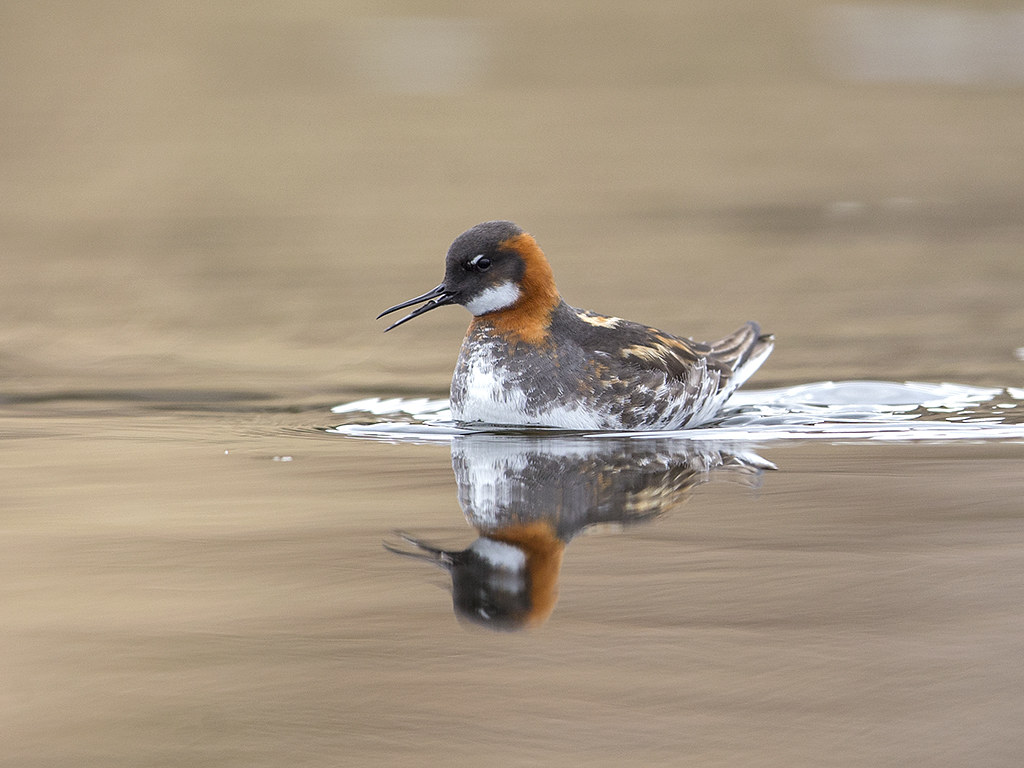 and who can tire of them?! They are so confiding, so attractive and a total pleasure to watch.
and who can tire of them?! They are so confiding, so attractive and a total pleasure to watch.
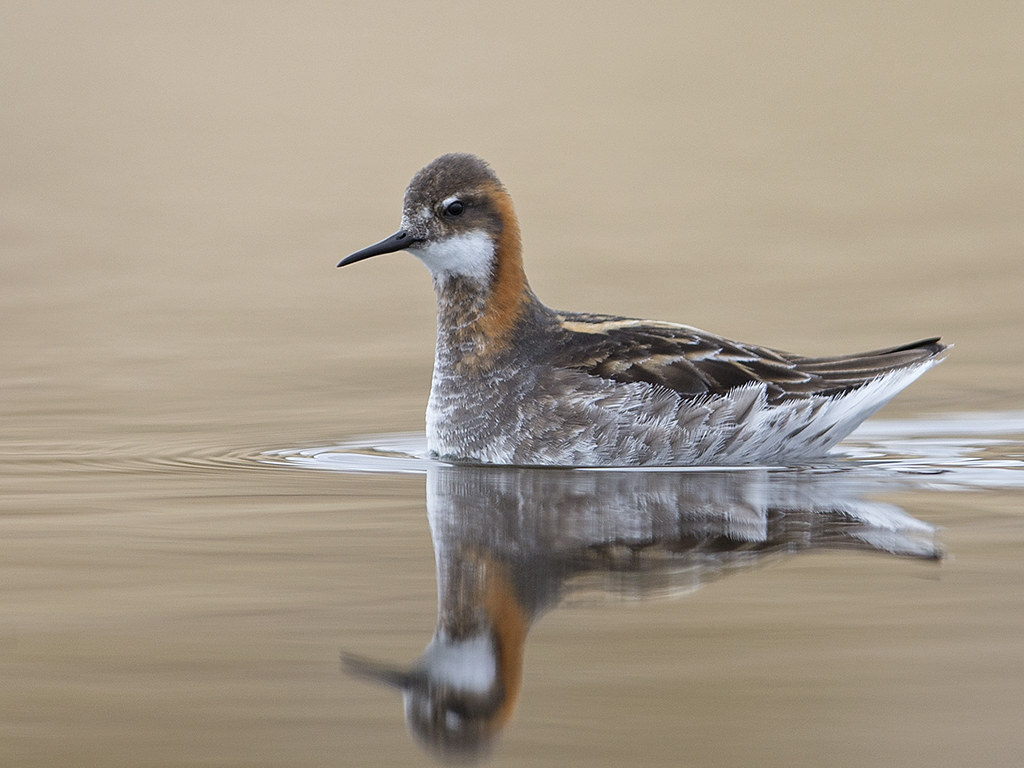 I decided to take the long walk around the local area following the river in a big circular route. This was the one Mike took on the first morning so I thought I'd better take a look as this was probably my last chance.
I found the light in the shade of the hill very much as expected.
I decided to take the long walk around the local area following the river in a big circular route. This was the one Mike took on the first morning so I thought I'd better take a look as this was probably my last chance.
I found the light in the shade of the hill very much as expected.
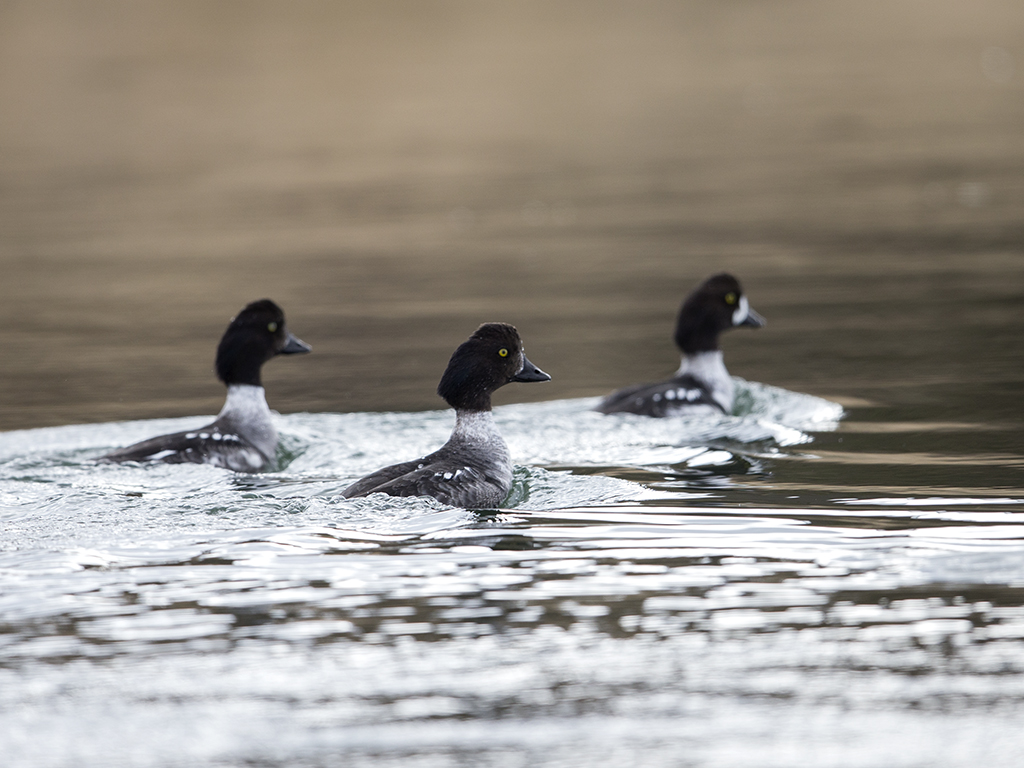 These Barrow's Goldeneyes just sat mid stream and paddled against the current although they slowly drifted in to a sunnier patch of water.
These Barrow's Goldeneyes just sat mid stream and paddled against the current although they slowly drifted in to a sunnier patch of water.
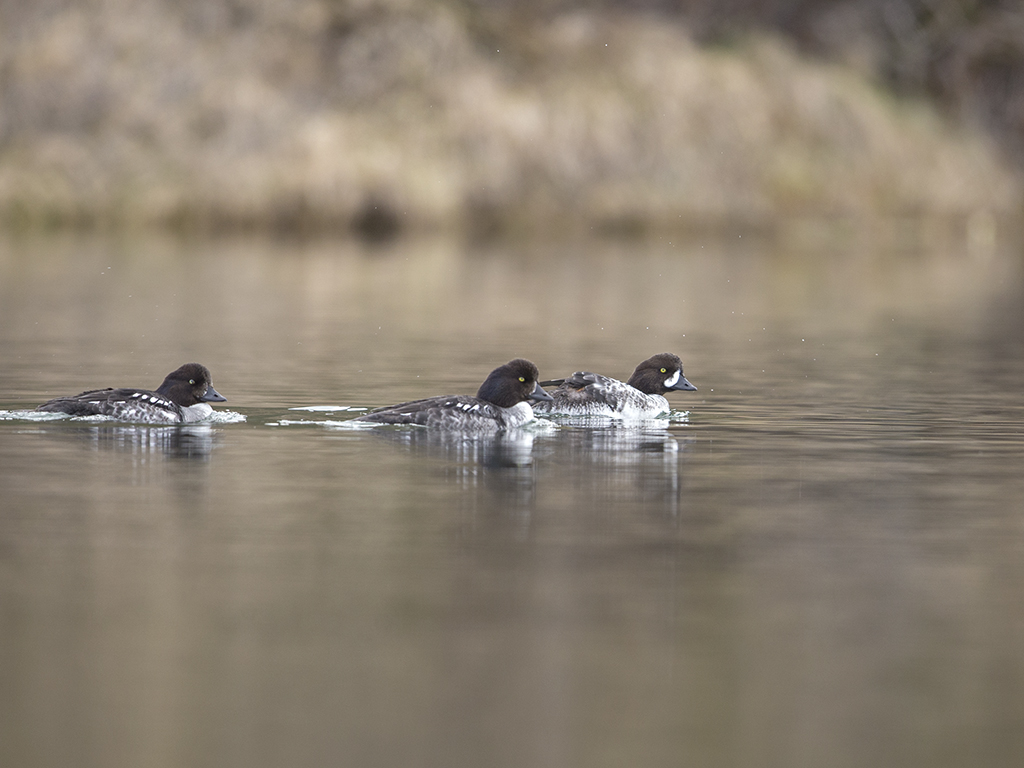 As I walked along I flushed Snipe and Godwits from where they had presumably roosted, Ducks from the side of the river. We had paid for an extra bag on our flight out but never got around to using our hides. We hadn't needed them to be honest and I felt that had I settled down and sat on the side of the river subjects would have come my way.
However, amongst the birds that took flight, a pair of Wigeon.
As I walked along I flushed Snipe and Godwits from where they had presumably roosted, Ducks from the side of the river. We had paid for an extra bag on our flight out but never got around to using our hides. We hadn't needed them to be honest and I felt that had I settled down and sat on the side of the river subjects would have come my way.
However, amongst the birds that took flight, a pair of Wigeon.
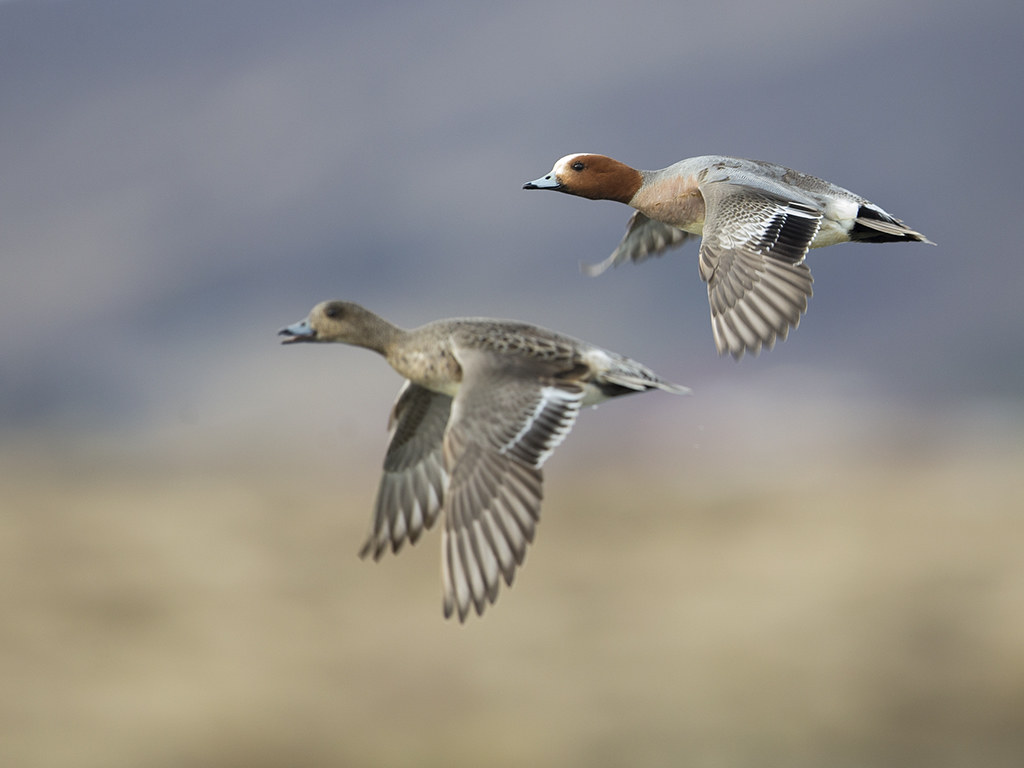 I wasn't prepared for the shot so the rather low shutter speed already set was used without thinking but I must admit I rather like the result and might try something similar in future to introduce a motion blur!
I wasn't prepared for the shot so the rather low shutter speed already set was used without thinking but I must admit I rather like the result and might try something similar in future to introduce a motion blur!
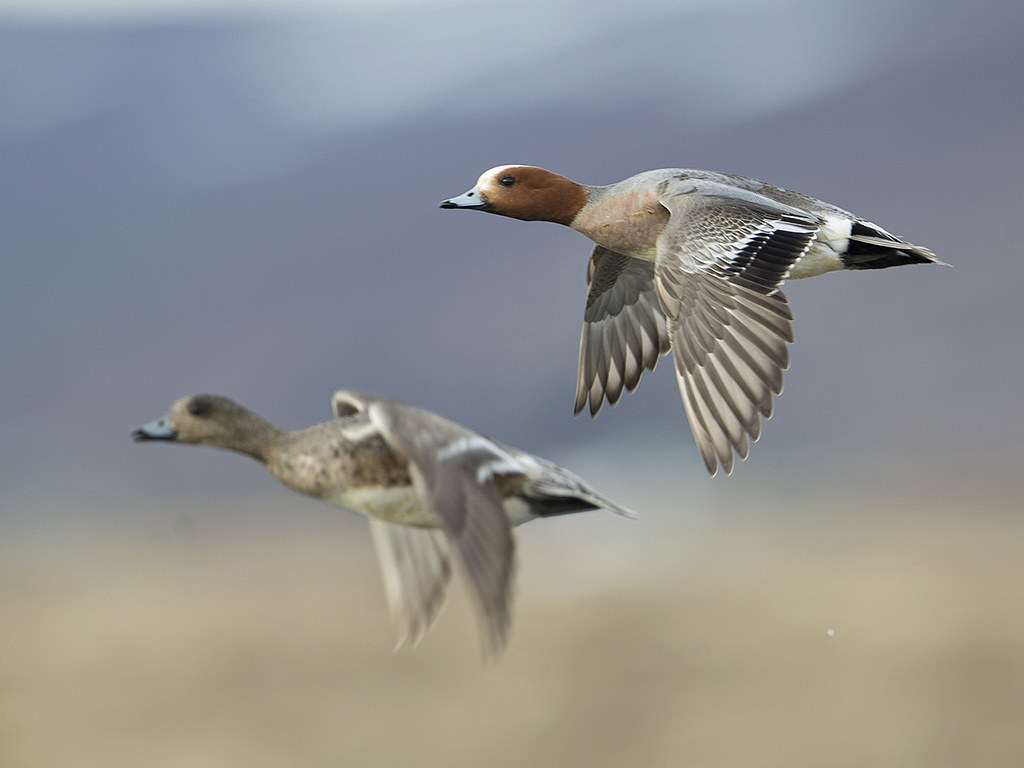 The hour or so it took to complete the walk produced nothing else so I ended up back in the Phalarope pond.
This time I tried using my new 100-400 lens as it's close focus capability suited the fact the birds come so near to you!
The hour or so it took to complete the walk produced nothing else so I ended up back in the Phalarope pond.
This time I tried using my new 100-400 lens as it's close focus capability suited the fact the birds come so near to you!
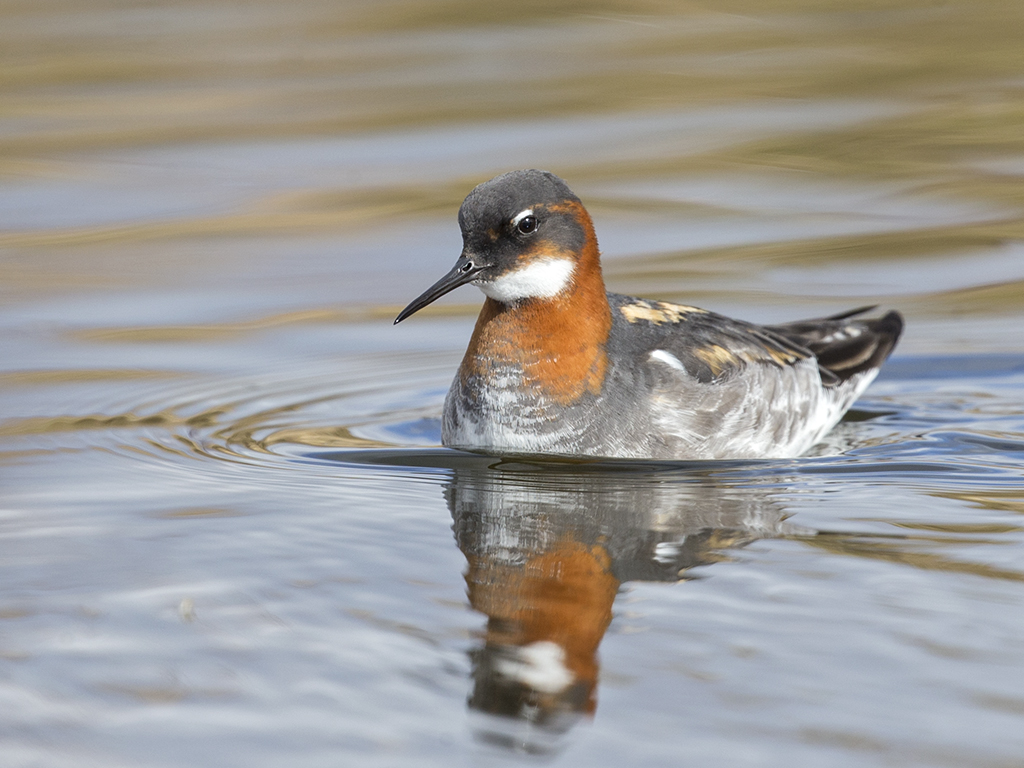 Mounted on a heavy Canon 1D the lens felt so much better than on my lightweight 5D3.
Mounted on a heavy Canon 1D the lens felt so much better than on my lightweight 5D3.
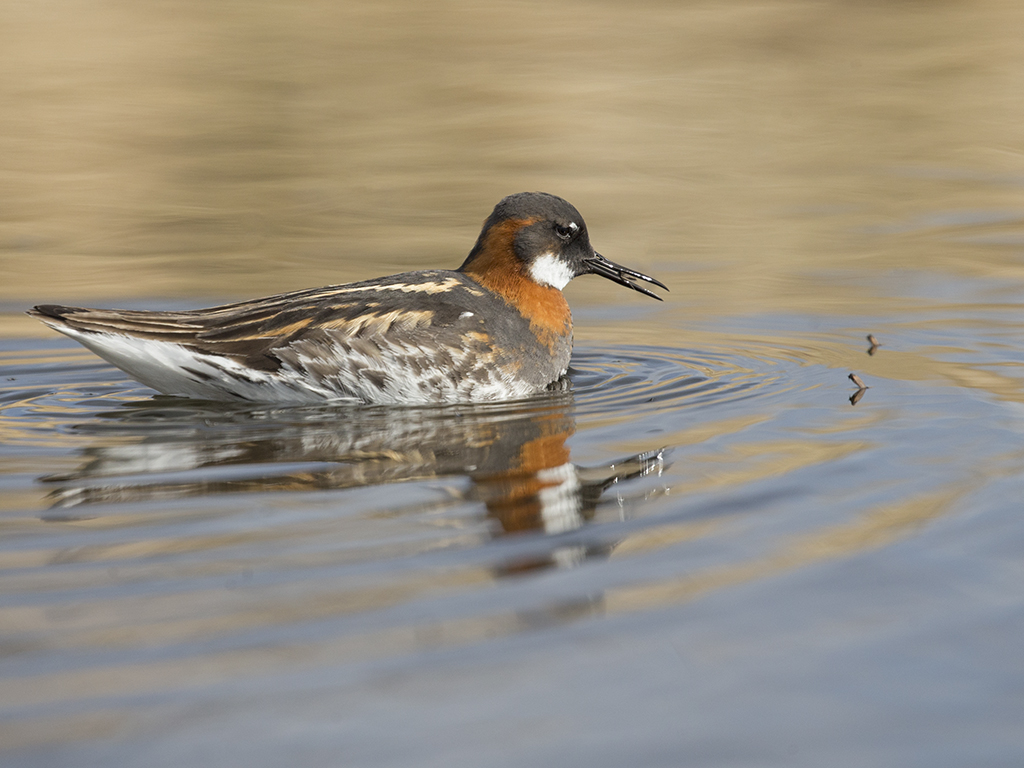 The shorter barrel and light weight of the lens make a wider field of view and following the action much easier, then there is the zoom capability too. It's certainly a cracking lens and for the price considerably cheaper than most Canon options to get you to 400mm or even 560mm with a 1.4xTC.
Satisfied that I had enough reasonable shots it was time for breakfast. We decided the weather towards Myvatn was looking very gloomy, stormy even, and so we had no option but to return to Husavik in which direction the sun was beaming down brightly.
Of course we stopped on the way to check the Diver lake. Nothing doing again! We had checked the previous evening on the way home too, perhaps we had just got lucky two days earlier, on the other hand maybe these were the pair off the beach in Husavik, its not that far.
Sure enough there was a pair there again and I spent far too much time watching and waiting so if you want to see your average GND sight it's a bit like this!
The shorter barrel and light weight of the lens make a wider field of view and following the action much easier, then there is the zoom capability too. It's certainly a cracking lens and for the price considerably cheaper than most Canon options to get you to 400mm or even 560mm with a 1.4xTC.
Satisfied that I had enough reasonable shots it was time for breakfast. We decided the weather towards Myvatn was looking very gloomy, stormy even, and so we had no option but to return to Husavik in which direction the sun was beaming down brightly.
Of course we stopped on the way to check the Diver lake. Nothing doing again! We had checked the previous evening on the way home too, perhaps we had just got lucky two days earlier, on the other hand maybe these were the pair off the beach in Husavik, its not that far.
Sure enough there was a pair there again and I spent far too much time watching and waiting so if you want to see your average GND sight it's a bit like this!
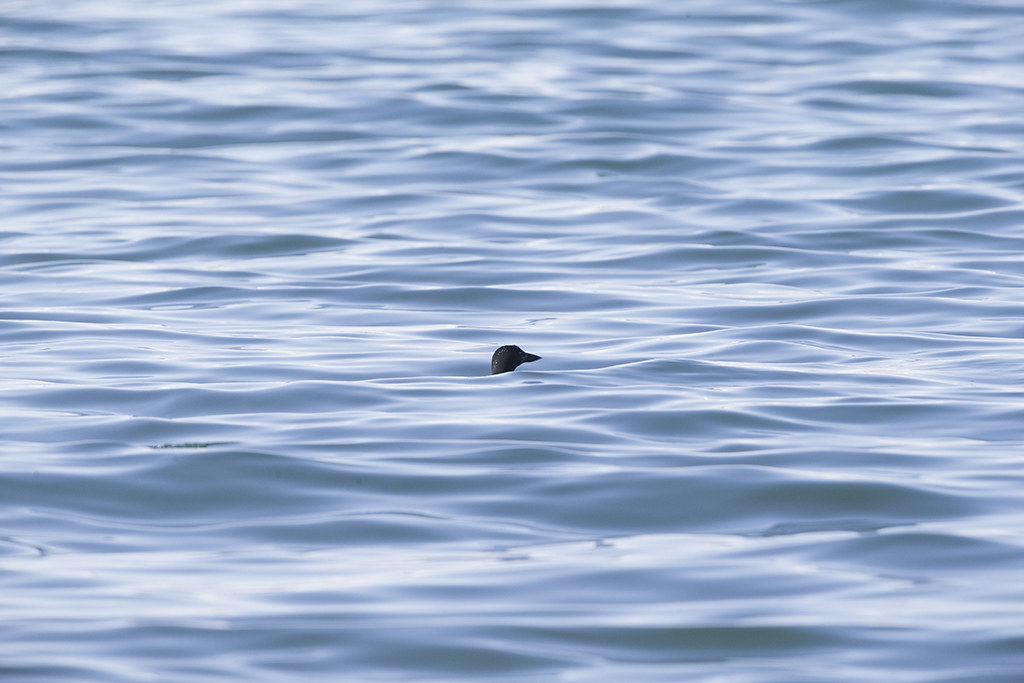 I won't show you any more of my efforts as they are not very good!
What we did have a ball with though were the shoreline waders. In glorious sun as opposed to the gloom the previous day the Red Knots looked fabulous.
I won't show you any more of my efforts as they are not very good!
What we did have a ball with though were the shoreline waders. In glorious sun as opposed to the gloom the previous day the Red Knots looked fabulous.
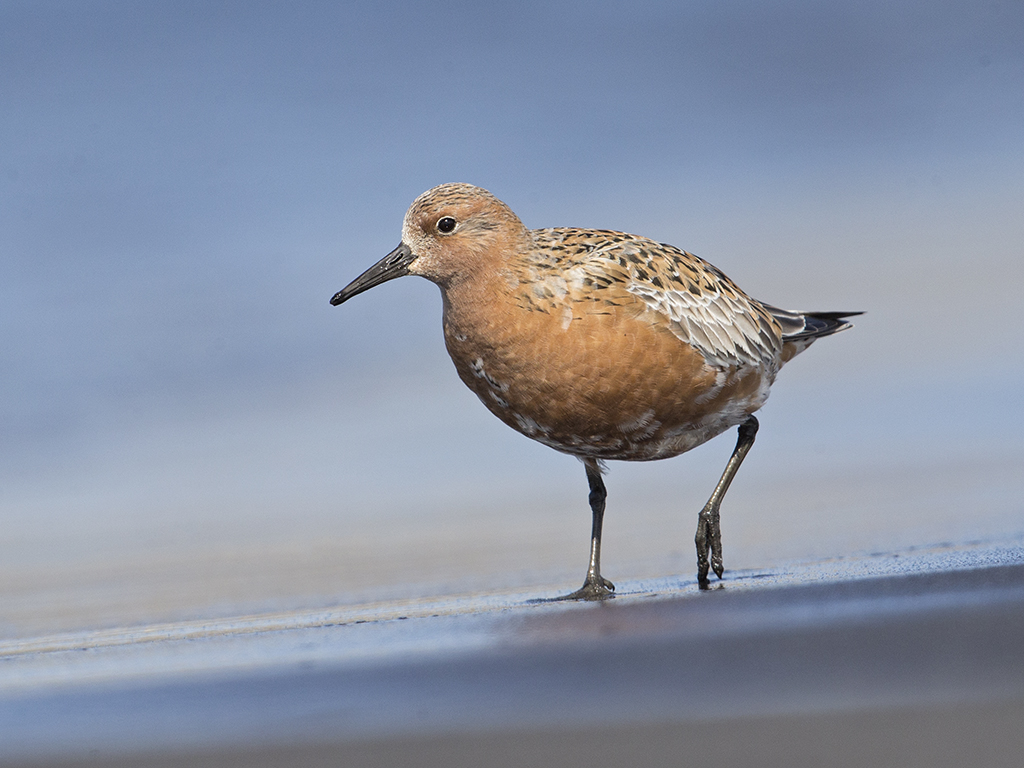 I think there were three or four in total and the least coloured one seemed the most confiding.
I think there were three or four in total and the least coloured one seemed the most confiding.
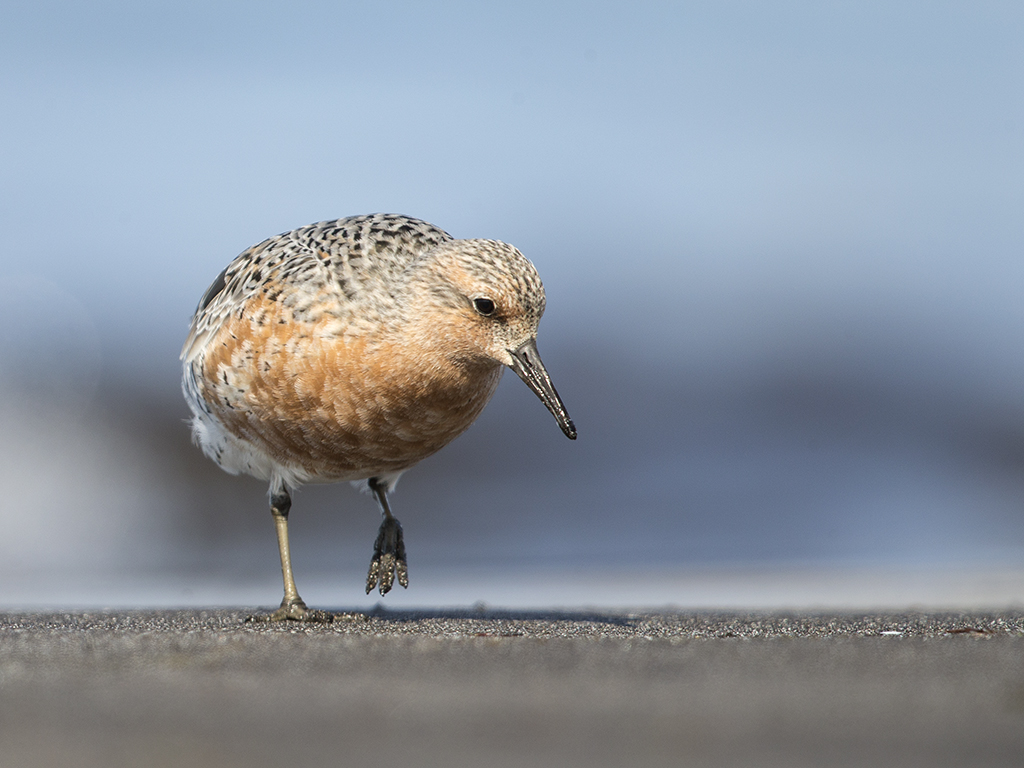 Lying low in the sand you get a fabulous view,
Lying low in the sand you get a fabulous view,
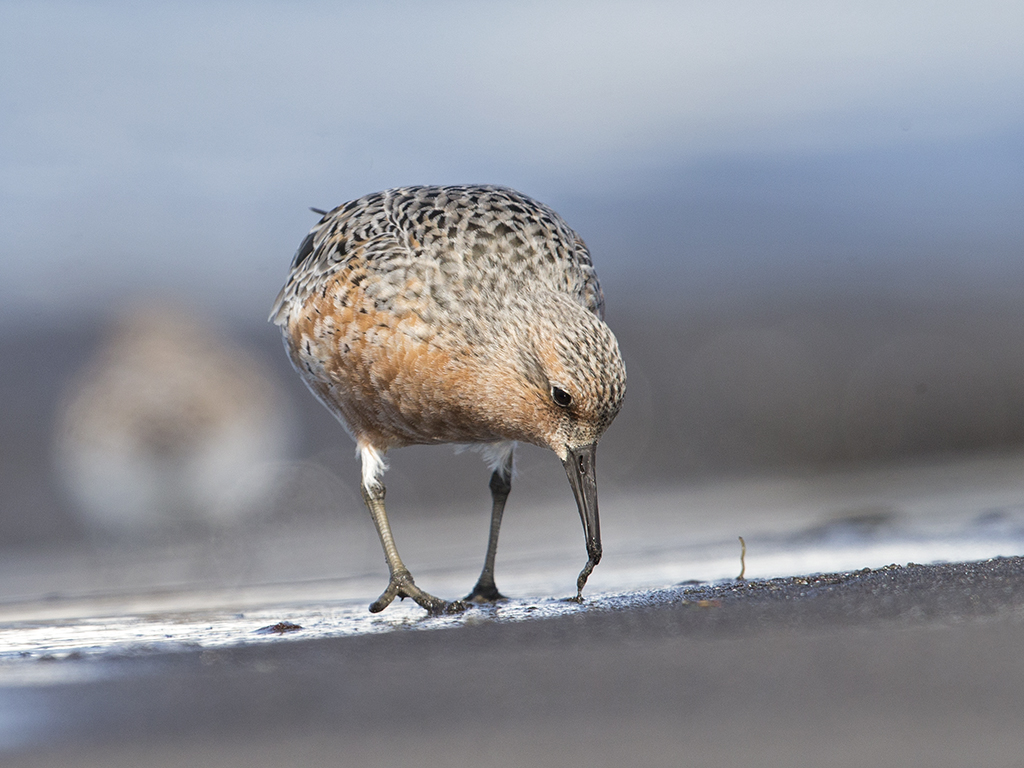 and you feel as if you are entering their world.
and you feel as if you are entering their world.
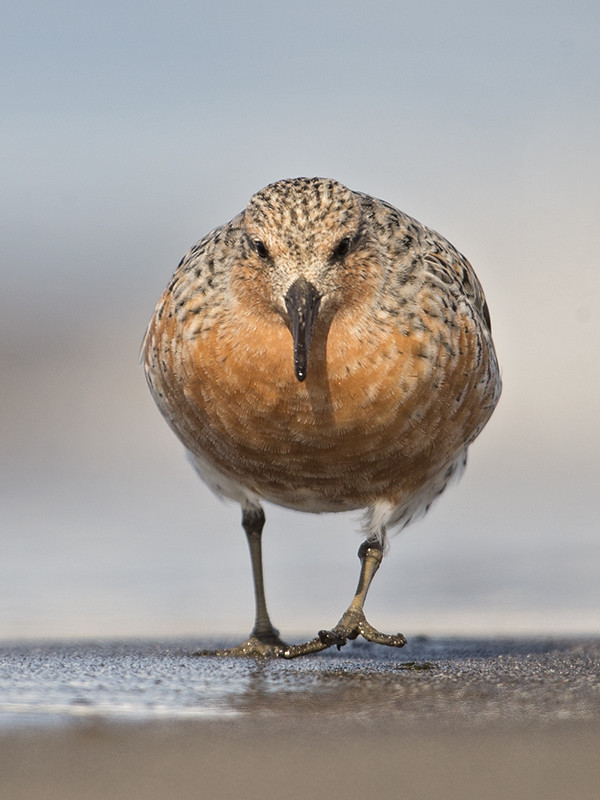 They on the other hand seemed happy to enter mine too!
They on the other hand seemed happy to enter mine too!
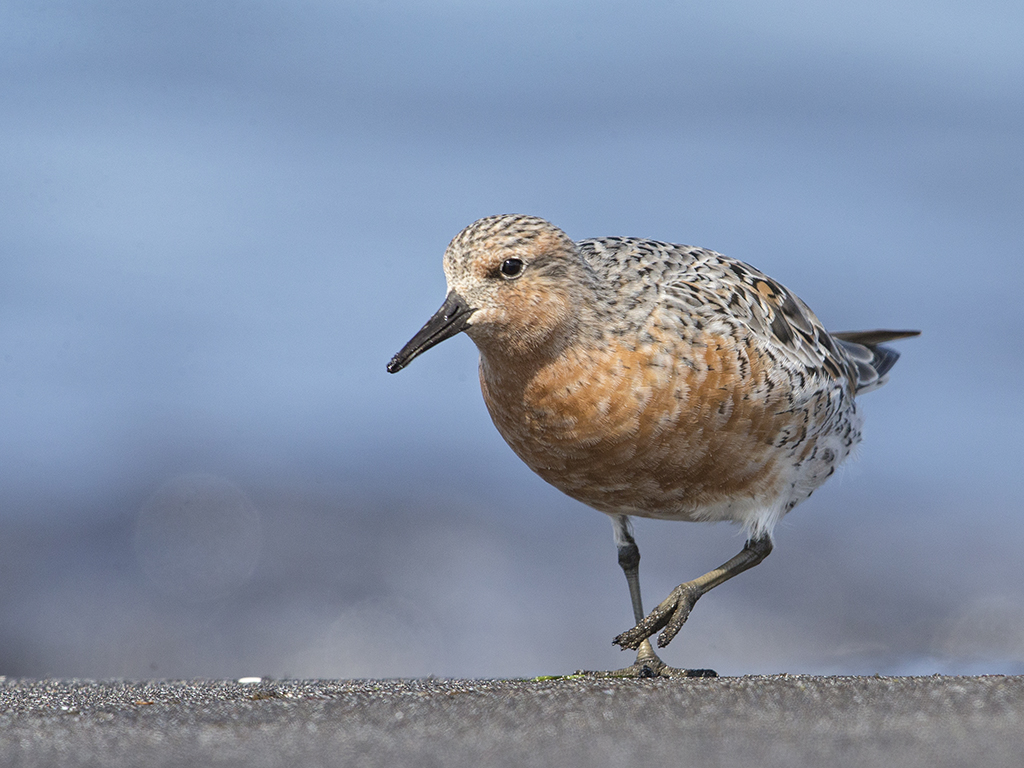 I might have felt a bit stupid dressed in camouflage lying on the sand with the whole population of Husavik looking down on me to say nothing of passing traffic but the gear was superb. You can feel it's damp and wet underneath you but you stay perfectly dry and the sand soon brushes off when you get up too.
As well as the Knot, there were close up views of Sanderling too.
I might have felt a bit stupid dressed in camouflage lying on the sand with the whole population of Husavik looking down on me to say nothing of passing traffic but the gear was superb. You can feel it's damp and wet underneath you but you stay perfectly dry and the sand soon brushes off when you get up too.
As well as the Knot, there were close up views of Sanderling too.
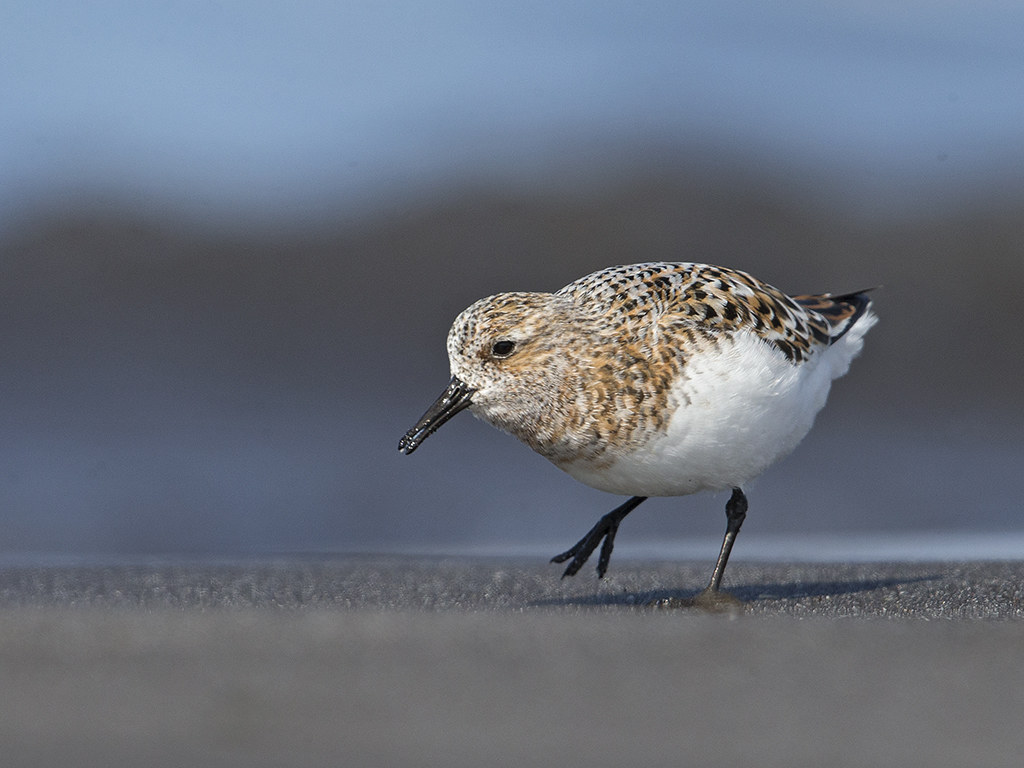 Lovely little birds
Lovely little birds
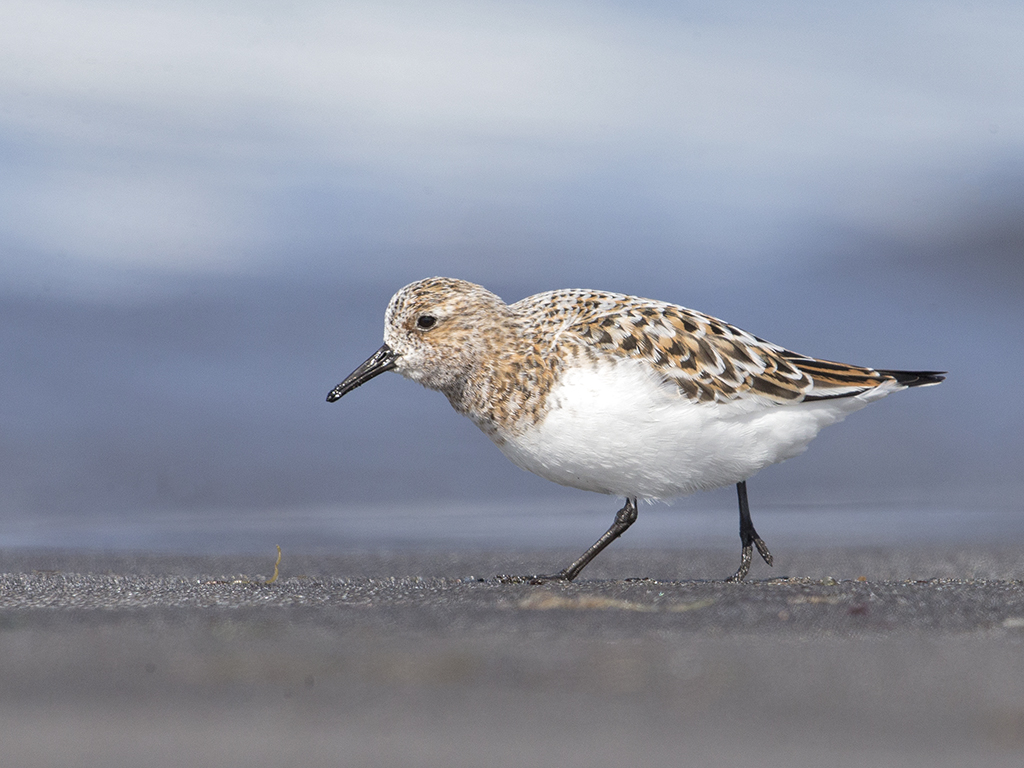 and this one wasn't ringed like the one from the previous day either.
and this one wasn't ringed like the one from the previous day either.
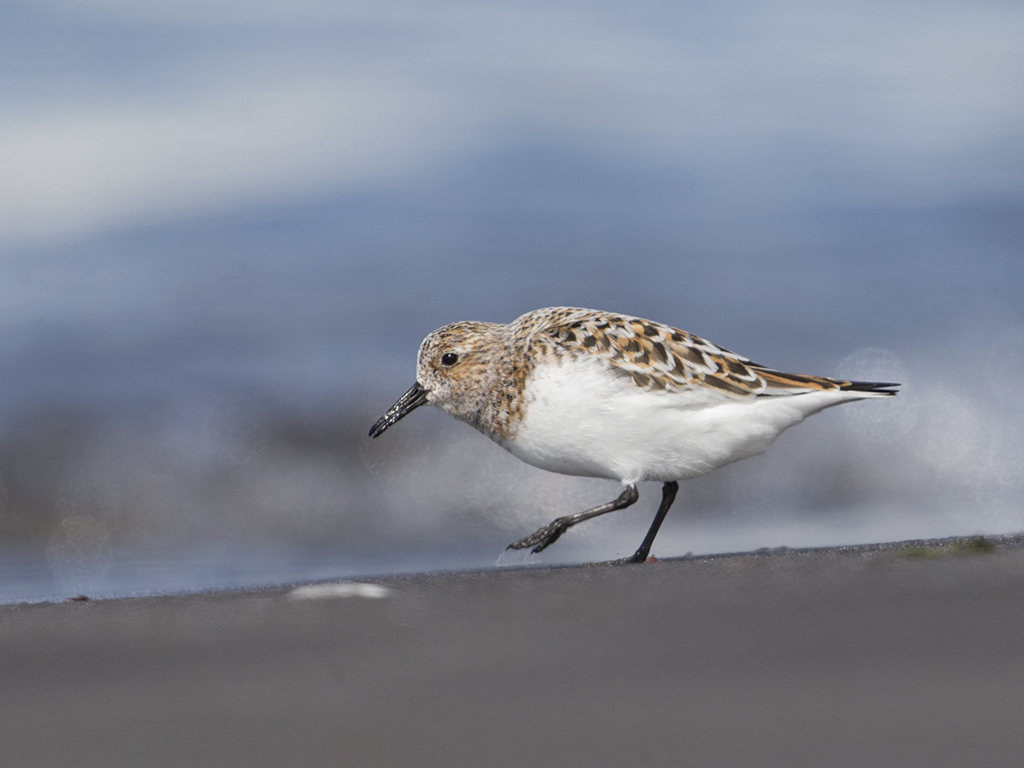 I think this was probably my favourite session of the whole trip but it's a tough call to decide.
Having leant my 600mm to Mike, I borrowed his 300mm to take some flight shots too.
I think this was probably my favourite session of the whole trip but it's a tough call to decide.
Having leant my 600mm to Mike, I borrowed his 300mm to take some flight shots too.
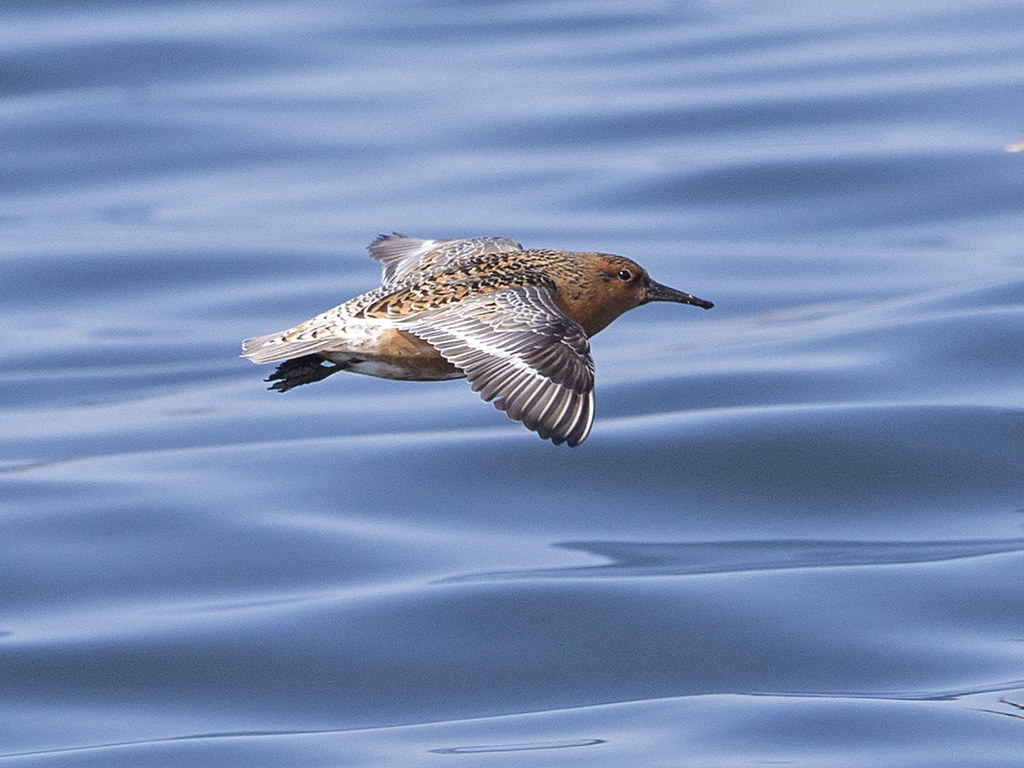 No doubt the f2.8 is a great bird in flight lens, alas I no longer own one!
No doubt the f2.8 is a great bird in flight lens, alas I no longer own one!
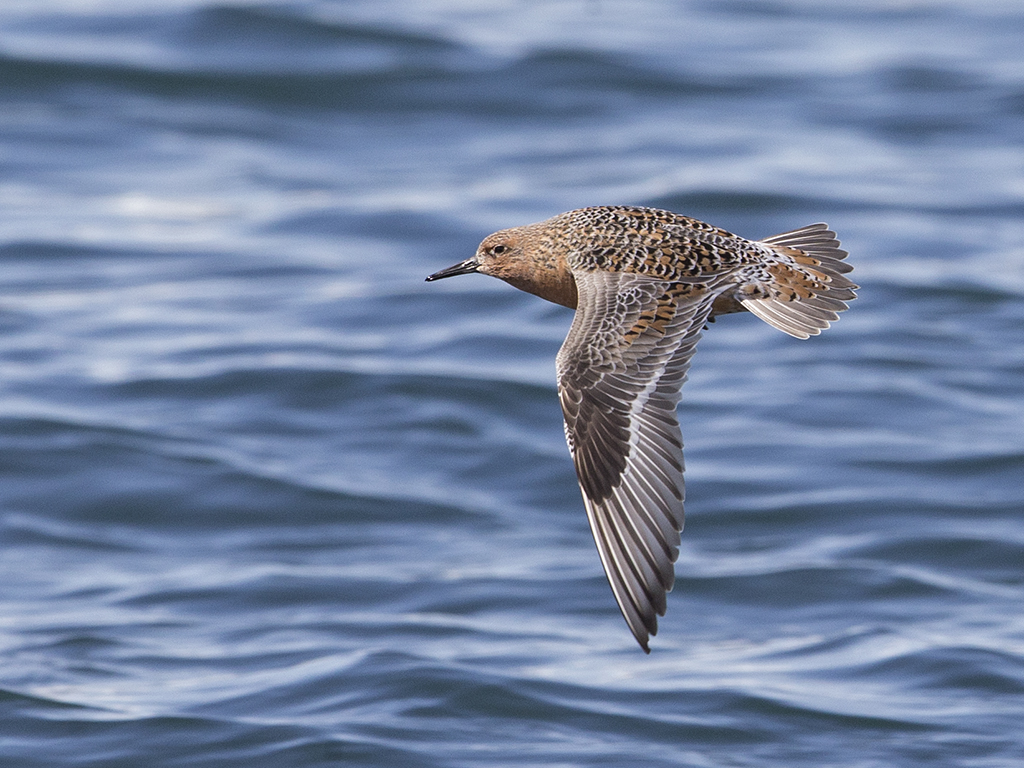 I have yet to try the 100-400 in that department.
Finished on the shore I tried my luck on the harbour wall waiting for the Divers. I spotted our whale watching boat returning from a midday trip loaded with folk and once again congratulated ourselves for having gone when we did!
I have yet to try the 100-400 in that department.
Finished on the shore I tried my luck on the harbour wall waiting for the Divers. I spotted our whale watching boat returning from a midday trip loaded with folk and once again congratulated ourselves for having gone when we did!
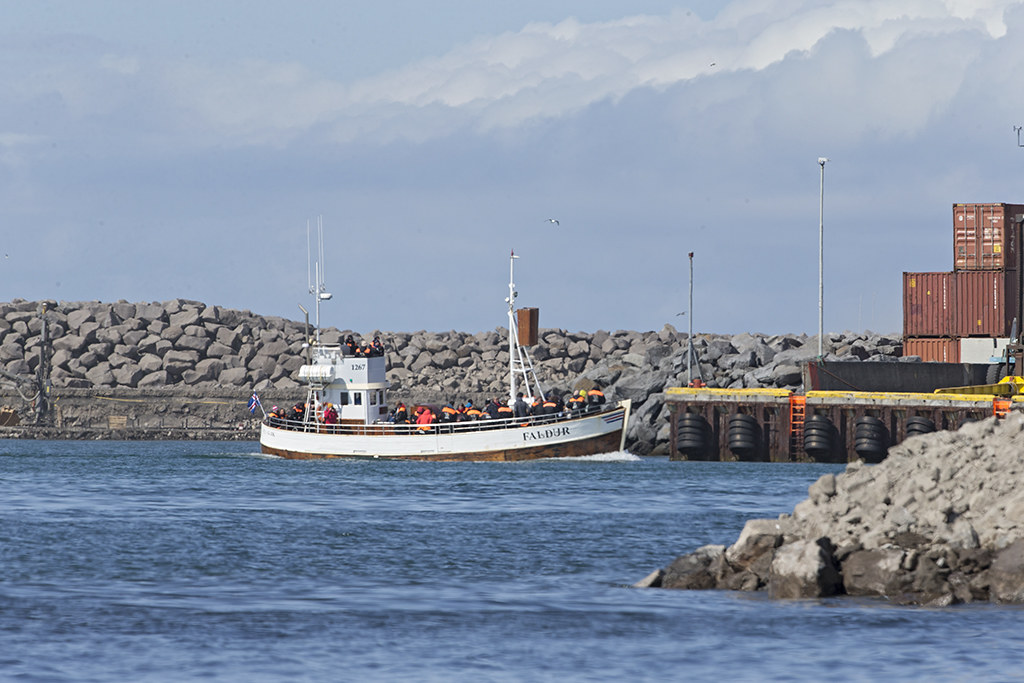 As for the Divers. As mentioned previously, more frustration !
Still, a handsome Great Black-backed Gull was there for company
As for the Divers. As mentioned previously, more frustration !
Still, a handsome Great Black-backed Gull was there for company
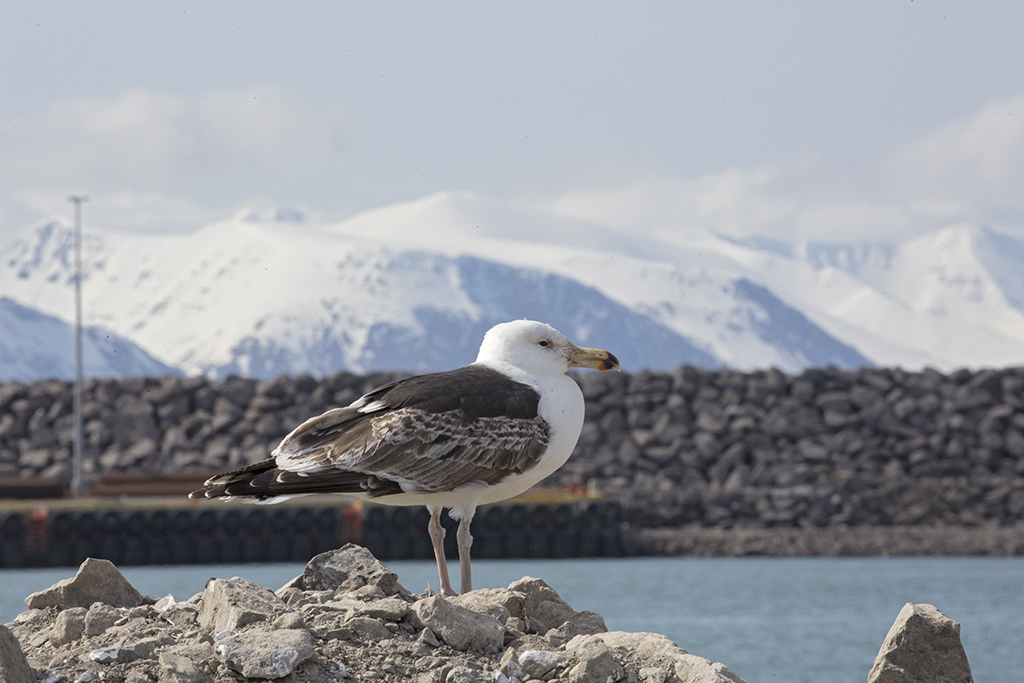 As well as another birdwatcher from Holland so it was interesting to chat to him too.Eventually though we decided to give the Kaldbakur site another crack. Who knows what we might find on the lake this time.
The answer was a distant Diver and this Slavonian Grebe.
As well as another birdwatcher from Holland so it was interesting to chat to him too.Eventually though we decided to give the Kaldbakur site another crack. Who knows what we might find on the lake this time.
The answer was a distant Diver and this Slavonian Grebe.
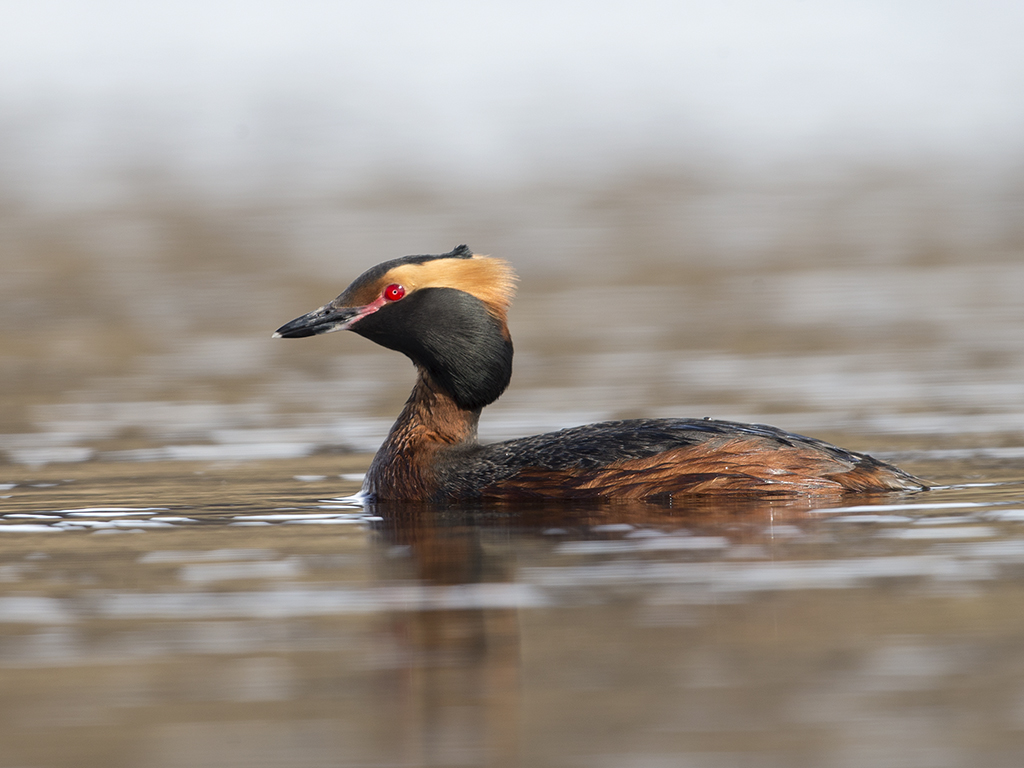 The scenery is quite magnificent across Husavik bay and it was beautiful just to sit and take it in, follow the whale watching boats and wait for the whales to blow nearby.
The scenery is quite magnificent across Husavik bay and it was beautiful just to sit and take it in, follow the whale watching boats and wait for the whales to blow nearby.
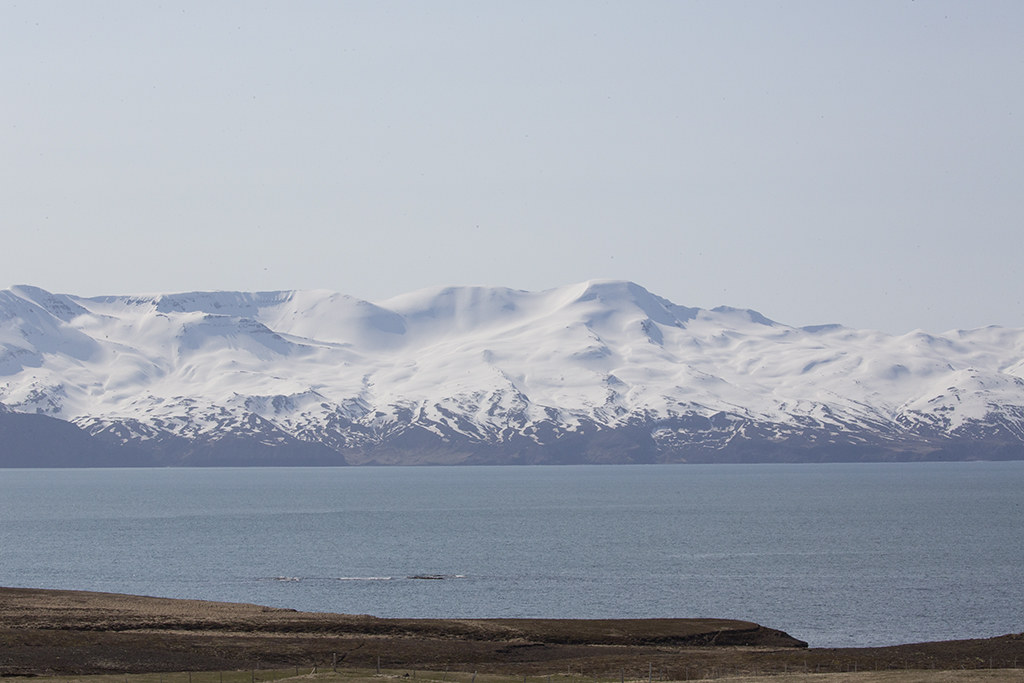 Our time in the north east was coming to an end all too soon, even sooner as that stormy looking weather was eventually arriving towards us having kept it's distance until tea time.
Our time in the north east was coming to an end all too soon, even sooner as that stormy looking weather was eventually arriving towards us having kept it's distance until tea time.
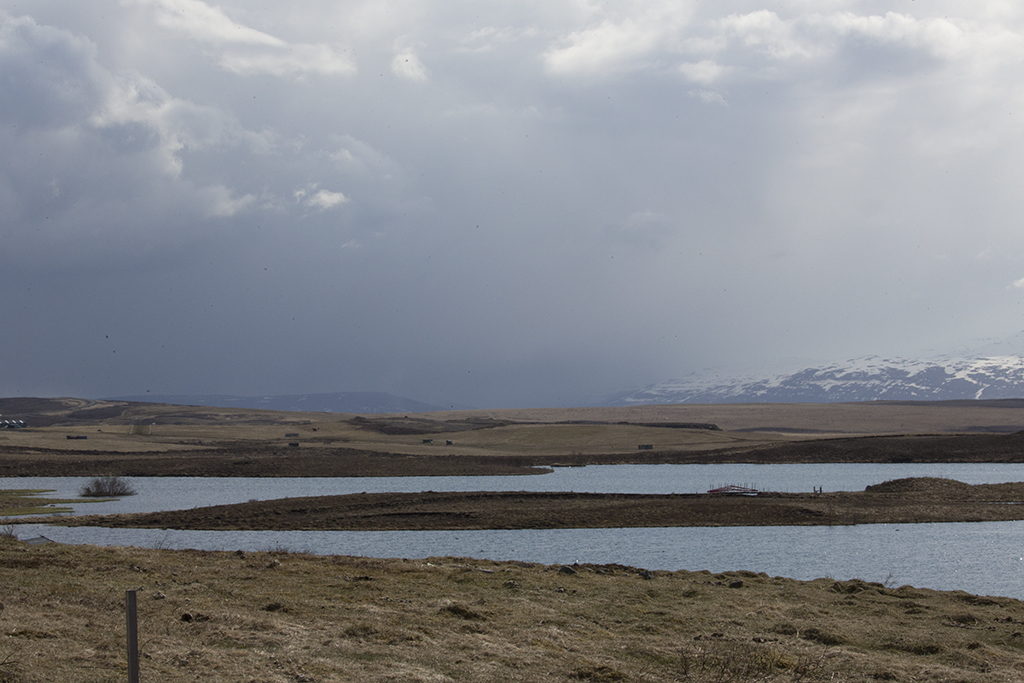 We had been so,so lucky with the weather.
We had one last drive around heading for new ground up a mountain and a bit of off roading but our progress was halted when the track was blocked by snow. Not much to record but I had a stop and another crack at the Snipe flying overhead.
We had been so,so lucky with the weather.
We had one last drive around heading for new ground up a mountain and a bit of off roading but our progress was halted when the track was blocked by snow. Not much to record but I had a stop and another crack at the Snipe flying overhead.
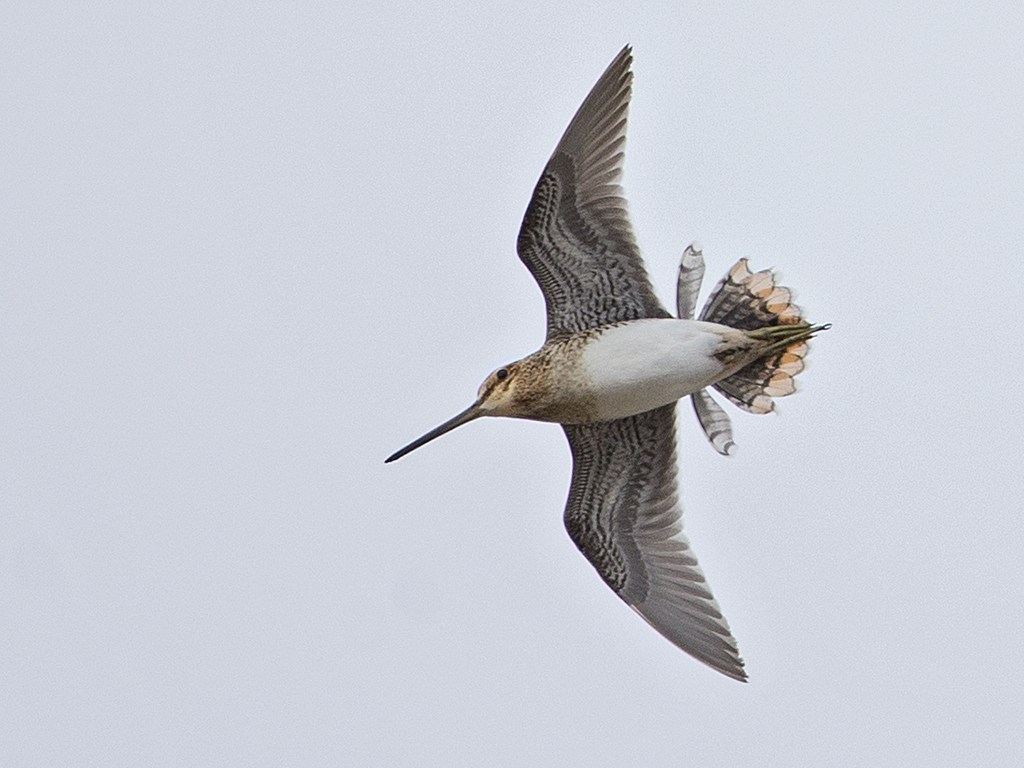 That over it was time to go home and pack for our departure the following day.
T.B.C.
That over it was time to go home and pack for our departure the following day.
T.B.C.































































